Ah, the Ducati Multistrada. It’s the epitome of the modern luxury SUV of motorcycles — comfort, power, agility, and style. Not the maximum in any one area, but enough of most of them to make most people happy.
But that’s a description of the modern Multistrada. If you’re considering a Ducati Multistrada, you’re probably aware that it has a history spanning decades already, back to the days of the Desmodue engine in 2003.
Coincidentally, I had the pleasure of owning the first-year Multistrada as my first example in the series. This was almost by accident — it was there and it was cheap — so that formed a nice intro to the series, in which I’ve dabbled further over the years.
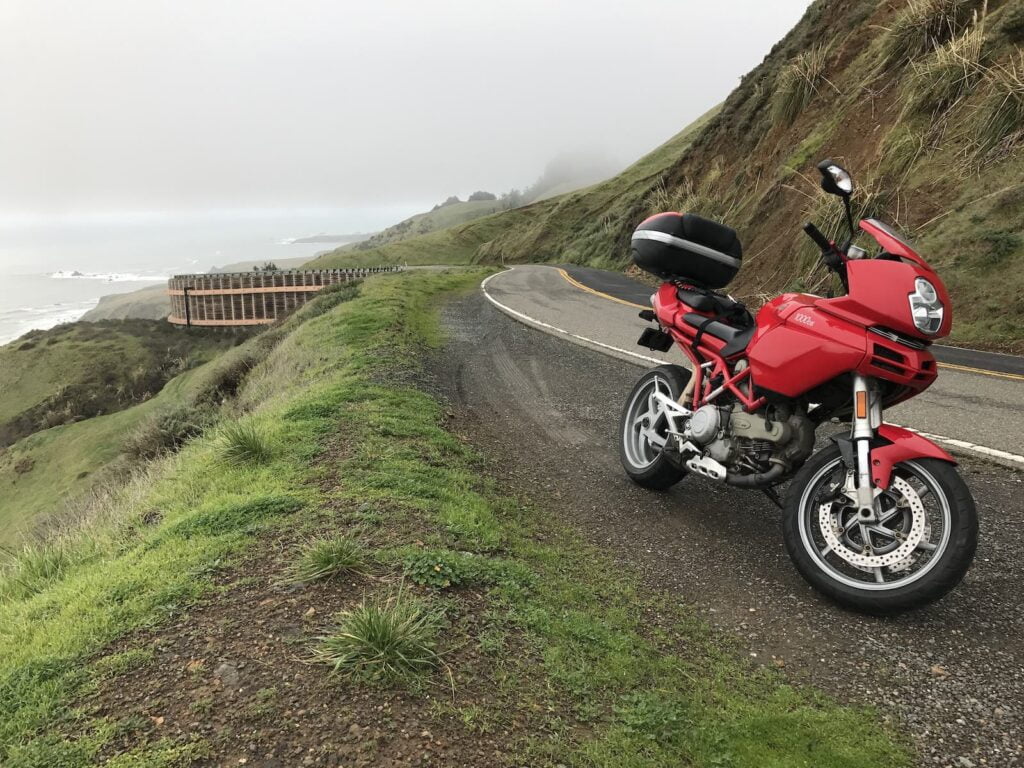
Between 2003 and 2009, Ducati iterated on the basic model using a trellis frame and an air/oil-cooled Desmodue engine, similar to those used in the Ducati Monster line and the Ducati Sport Classic motorcycles, as well as a few others. From 2010 onward, Ducati launched the second wave of Multistradas, with the liquid-cooled Testastretta-11-powered Multistrada 1200, which deserves a separate buyer’s guide.
But the air/oil-cooled period was an interesting one for the Ducati Multistrada. It’s a cool engine, firstly. During those years, the Multistrada was unabashedly road-focused, with 17-inch front and rear tires, and no “enduro” options like spoked rims or long-travel suspension.
Plus, the air-cooled Multistradas look kinda weird! I used to think it was ugly and just dealt with it, or tried to find the right angle when taking photos. These days, either I’ve become weirder, or it has become cooler, or maybe (hopefully) both.
Below is a buyer’s guide to the 2003-2009 air/oil-cooled Desmodue Multistradas, going over
- A brief intro to the Multistrada
- A model history of the Multistrada 1000 / Multistrada 1100 — What changed
- What makes the air/oil-cooled generation interesting and different, and
- Alternatives from the period you might consider (there’s nothing quite like it).
Enjoy!
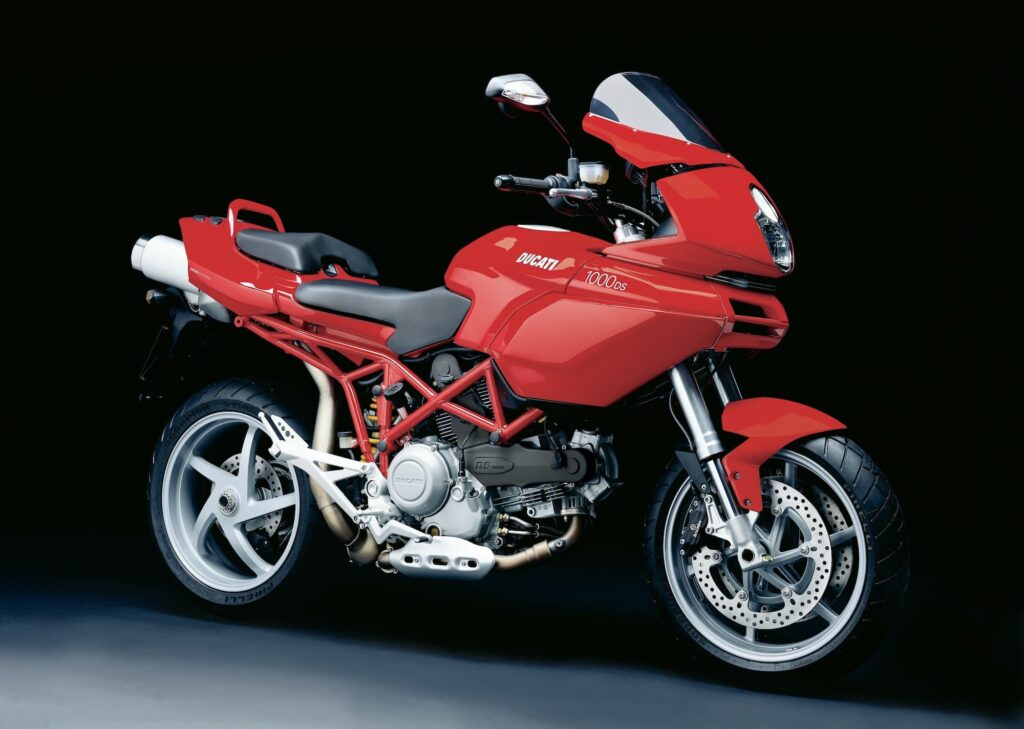
Are you obsessed with motorcycles?
Well, I am. That’s why I created this site — as an outlet. I love learning and sharing what others might find useful. If you like what you read here, and you’re a fraction as obsessed as I am, you might like to know when I’ve published more. (Check the latest for an idea of what you’ll see.)
Just What Was the First Multistrada? An Overview
There’s almost an unfair amount of mystique around the Ducati brand. Yes, they make good bikes, and have pioneered lines of tech, caused others to be popular, and helped categories of motorcycle grow. But they didn’t invent all of them! They’re a bit like Apple in that way (Apple didn’t invent the flat black slab phone, but it definitely brought it into the mainstream.)
The original air/oil-cooled Multistradas are what we now call “adventure sport touring” motorcycles. They have engaging engines (sport!), quality suspension and brakes, and a comfortable riding position that means you can spend a whole day out in the mountains (less so on the first model) and not be complaining about your wrists or back on the ride home.
Before the 2003 Multistrada, there were motorcycles of the same genre, of course. There was the Yamaha XJ900 Diversion, for example, and even its successor, the original carburetted R1-derived Yamaha Fazer 1000. Suzuki was making the Bandit 1200. And there may have been others… but they weren’t quite like the Multistrada 1000DS and its successors. They were usually heavier, for one, and less athletic feeling (though the Fazer is no slouch!)
So Ducati didn’t invent the adventure sport touring category. But with the first Multistrada, they were definitely acknowledging its utility in a motorcycle model lineup.
Ducati designed the original Multistrada with one road in mind — the Futa Pass (il Passo della Futa — Google Maps link), the local racing road near Bologna, on the way to Florence (Ducati HQ is just outside Bologna).
So it’s interesting to note that the Multistrada’s name derives from the Italian word strada, meaning “street” or “road” — implying that the Multistrada is designed for a multitude of roads. Which ones? Anything from highways to winding mountain passes, it seems. But preferably not an unsealed one. (Ducati said themselves “Anywhere there is pavement.”)

The designer of the Multistrada was Pierre Terblanche, a South African man with an unabashedly French name. He has given us other beauties like the Ducati 999 (a bike that took over a decade for its design to be appreciated), the Sport Classic, and even models appreciated by other brands, like the Royal Enfield Himalayan.
But most relevant, Pierre Terblanche gave us the Cagiva Gran Canyon, another sport tourer, from the days when Cagiva owned Ducati.
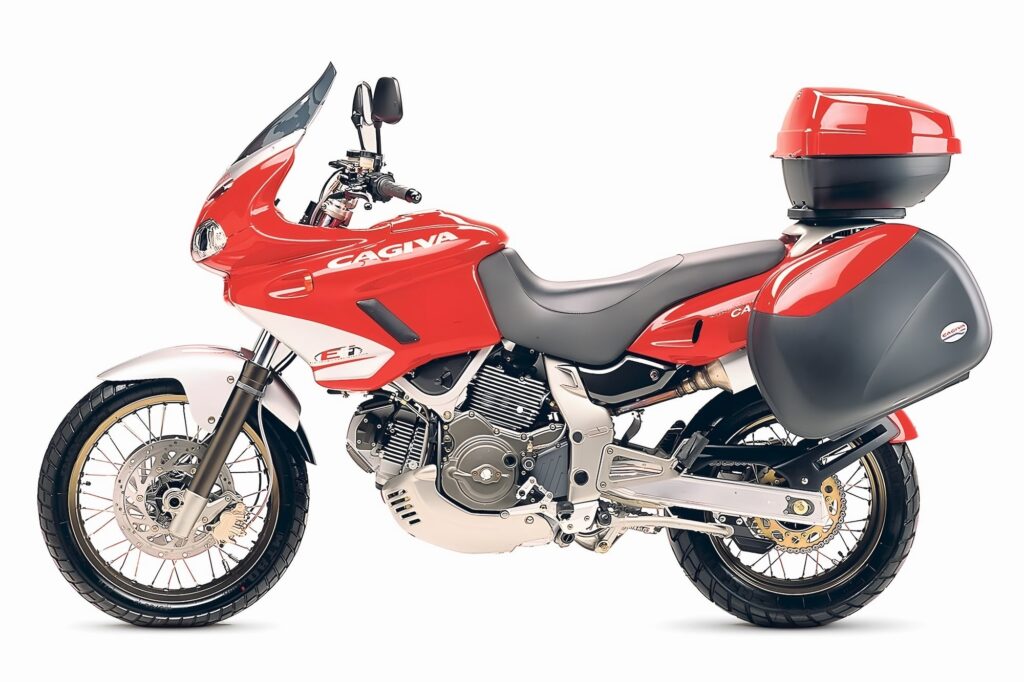
The Cagiva Gran Canyon was an adventure touring motorcycle that was both a replacement for the Cagiva Elefant, a now classic adventure bike, and a predecessor to the Multistrada. The Gran Canyon was a bit more road-oriented than the Elefant but less so than the Multi.
The heart of the Cagiva Gran Canyon was a fuel-injected version of the same 904 cc L-twin that powered the Ducati Monster 900 in its originally carburetted form. The 2nd gen Ducati Supersport 900 got the same fuel-injected motor, as would the Monster 900 a couple of years later.
The Gran Canyon had the first glimmering of the Multi 1000 — handlebars, a sporty short windscreen, and an upright seating position. But it was just a little more offroad-oriented, with spoked rims, a 19-incher at the front, and some undercarriage protection.
One foible of the Gran Canyon was that the screen was too far from the rider to be as effective as it could. A closer screen would mean that the wide handlebars would hit it. A taller screen would be unwieldy. So Pierre Terblanche had to rethink things, and that’s how we got to the split windscreen/fairing of the 1000DS
The design of the Multistrada 1000DS’ windscreen is such that when you steer the bike, the top of the windscreen turns, and nothing else. It’s a little jarring. But it means that the handlebars could be placed much closer to the short windscreen, which makes it much more effective at stopping air.
Ducati gave the new model much better suspension (the Showa units on the first 1000DS are fully adjustable and great), decidedly road-going 17-inch cast rims, and of course a bigger engine.
A Brief Word on the Ducati Multistrada’s Desmodue Engine
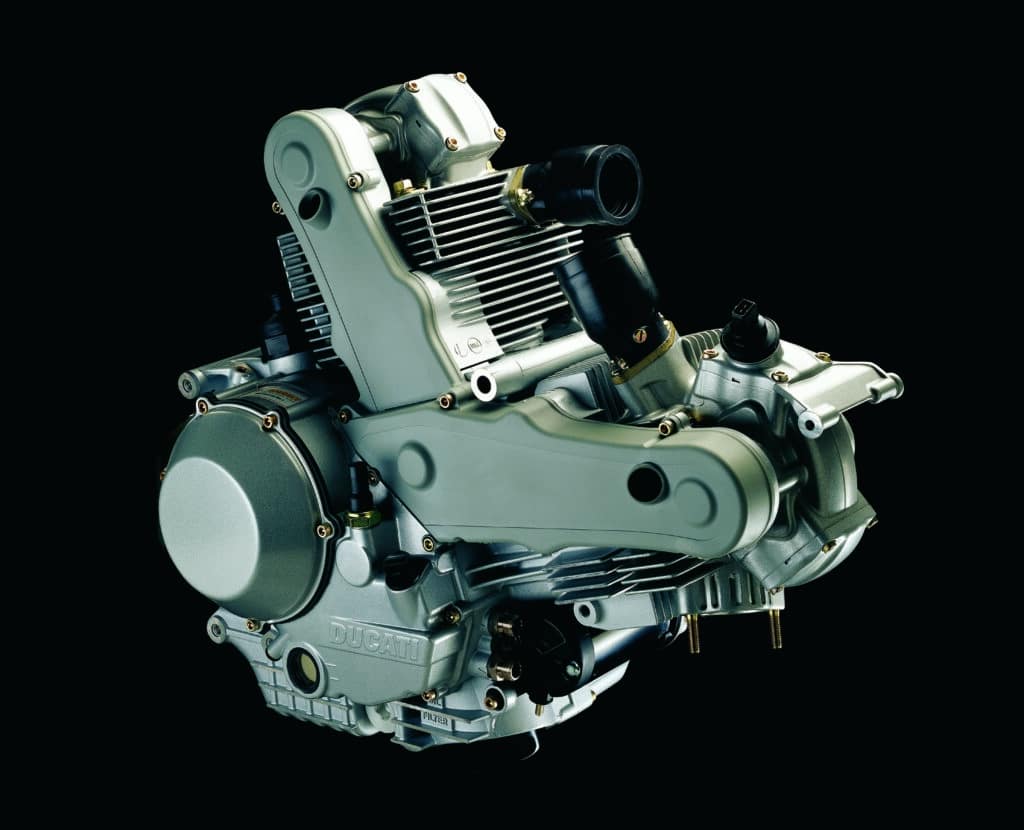
The Ducati Multistrada 1000DS and 1100 both had versions of Ducati’s “Desmodue” engine line. These are two-valve-per-cylinder air/oil-cooled engines with desmodromic timing and belt-driven valves.
See more about Ducati engines here.
Because people hear “Ducati” and think “expensive maintenance”, I think it’s important to bear in mind exactly what the engine means in terms of maintenance requirements.
Here’s what it means:
- Air/oil-cooled: The engine is cooled by oil, which runs through an oil cooler (like a mini radiator). There’s no coolant to change. This means fewer things to service, but it also can be annoying — the bike can run too cold in some conditions (e.g. riding in the rain) and it limits peak revs and power.
- Two-valves-per-cylinder: Each cylinder has just an inlet valve and an exhaust valve. This makes servicing easy, at least!
- Desmodromic timing: The valves are both opened and closed by cams. On most engines, valves are opened by cams, and closed by a spring. This means you have to check and adjust two clearances — and if one is out of spec, the other likely is, too. See here for more about desmodromic timing.
- Belt-driven valves: Some valve trains are driven by belts, some by gears, and some by chains (and some by a combination of gears and chains). Belts were initially used because they’re lightweight, but the downside is that you have to replace them every two years (or less often if you’re a risk taker).
Servicing the Ducati Desmodue engine actually isn’t hard. Once you remove the fairings and tank, which is most of the work, you use feeler gauges to check the clearances and, after some math, decide if you need new shims.
The good news is that you don’t have to remove camshafts or muck around with a timing chain!
Also, fundamentally, some of the early Ducati 1000 engines had a problem with their valve guides. This plagued not just the Multistrada, but also the Monster 1000, Supersport 1000, and other models. It causes a rough idle / easy stalling on cold idle, oil use, and leaking oil out of the exhaust headers where they connect with the heads. You can see this thread on a Ducati Monster forum about it.
That said, the valve guide engine doesn’t affect every bike. If yours has 20K+ miles on it and runs fine, it’s probably fine.
Ducati resolved the valve guide issue by the 1100 motor.
As I mentioned above, the 1100 motor is so good that Ducati is still using it in the Ducati Scrambler 1100. The Ducati Hypermotard 1100 is another cult bike with the same engine, as is the Ducati Monster 1100.
In fact, Ducati isn’t the only one to use it — Bimota also used it in a couple of models. If you’ve ever had the chance to peek at a Bimota Tesi 3D — like the one below being ridden by Abhi at Iconic Motorbikes — you’ll get an idea of just how much can be done with it.
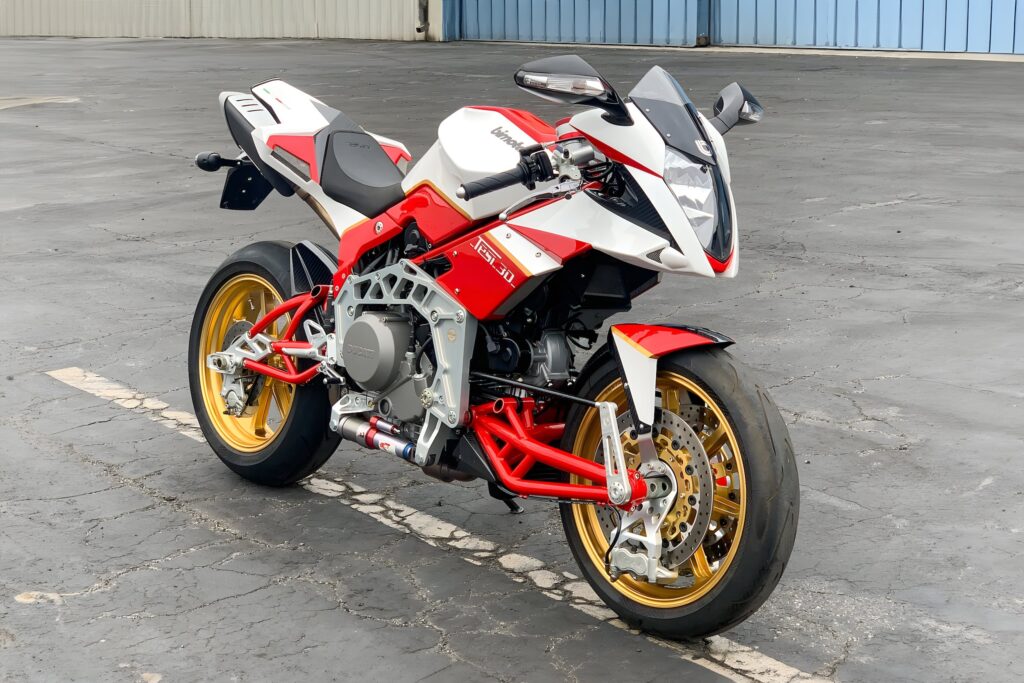
Anyway, let’s have a look at the air/oil-cooled Multistrada 1000 / 1100 generations below.
Overview of Ducati Multistrada (Air-cooled) Generations
Below is a table with an overview of the major differences between the Ducati Multistrada in its air/oil-cooled Desmodue days.
I’ve boldfaced some notable changes.
| Item | 1000 DS | 1000 S DS | 1100 | 1100 S | 620 |
|---|---|---|---|---|---|
| First year | 2003 | 2005 | 2007 | 2007 | 2005 |
| Capacity | 992 cc | 992 cc | 1078 cc | 1078 cc | 618 cc |
| Bore / stroke | 94 x 71.5 mm | 94 x 71.5 mm | 98 x 71.5 mm | 98 x 71.5 mm | 80 x 61.5 mm |
| Compression ratio | 10.0:1 | 10.0:1 | 10.5:1 | 10.5:1 | 10.5:1 |
| Peak power | 67.7 kW / 92 hp @ 8000 rpm | 67.7 kW / 92 hp @ 8000 rpm | 70 kW / 95 hp @ 7750 rpm | 70 kW / 95 hp @ 7750 rpm | 46.4 kW / 63 hp @ 9500 rpm |
| Peak torque | 92.2 Nm @ 5000 rpm | 92.2 Nm @ 5000 rpm | 102.9 Nm @ 4750 rpm | 102.9 Nm @ 4750 rpm | 55.9 Nm @ 6750 rpm |
| Clutch | Dry | Dry | Wet | Wet | Wet |
| Front fork | Showa 43mm USD, fully adjustable | Öhlins 43mm USD, TiN-coated, fully adjustable | Marzocchi 43mm USD, fully adjustable | Öhlins 43mm USD, TiN-coated, fully adjustable | Marzocchi 43mm USD fork, non-adjustable |
| Rear shock | Showa monoshock, fully adjustable, remote preload | Öhlins monoshock, fully adjustable, remote preload | Sachs monoshock, fully adjustable, remote preload | Öhlins monoshock, fully adjustable, remote preload | Sachs monoshock, preload / rebound damping adjustable |
| Front brakes | 2 x 320 mm discs, 4-piston calipers | 2 x 320 mm discs, 4-piston calipers | 2 x 320 mm discs, 4-piston calipers | 2 x 320 mm discs, 4-piston calipers | 2 x 300 mm discs, 2 piston calipers Dark: 320mm single floating disc, 4-piston caliper |
Ducati Multistrada 1000DS (2003) and 1000S DS (2005)
It all started with the Ducati Multistrada 1000DS.
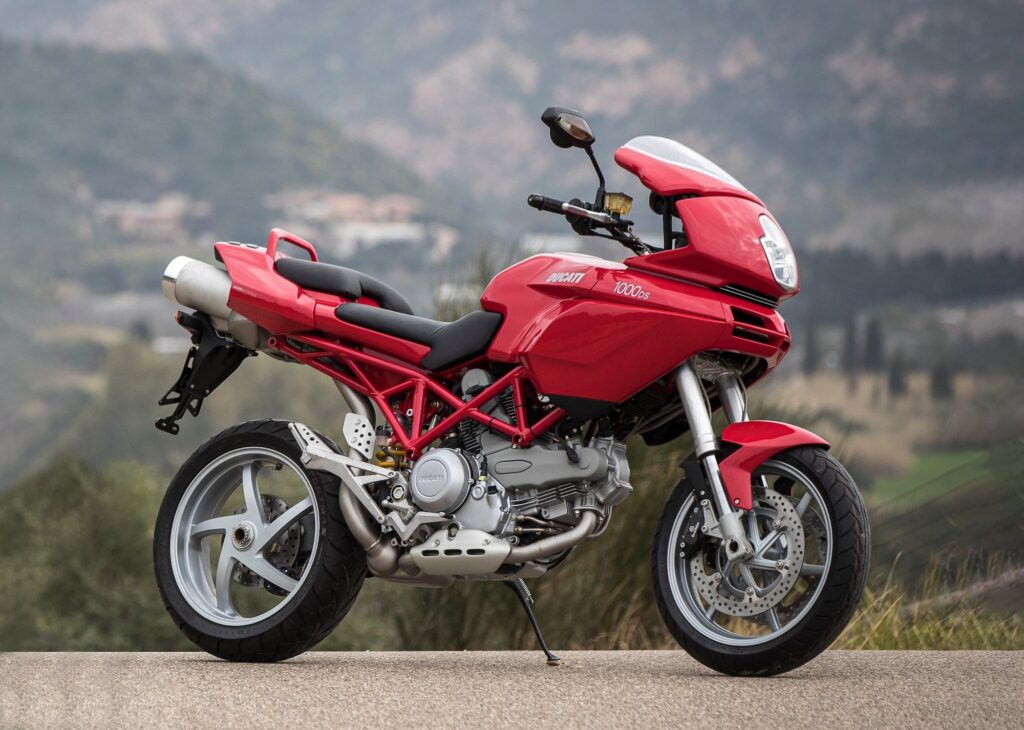
That’s a relatively new image of the Multistrada 1000DS, taken with a photo shoot of the Multistrada V4 in 2021, just to show how far both the Multistrada’s design and photo image quality have come in two decades!
The Ducati Multistrada 1000DS is based on a 992 cc air/oil-cooled engine. The DS means “Dual Spark”. It’s the same basic engine as in the Ducati Monster 1000, the Ducati Monster S2R1000, the Ducati Monster Sport Classic series, and Ducati Super Sport 1000. And others! (Ducati still does this today with their motors, especially the one in the Ducati Multistrada V2).

See here for a guide to Ducati engines, including the Desmodue.
Below are just some of the other motorcycles with the 1000 motor, with some details between them (not all Dual Spark for example). There are others — see the slider below.
Of course, the engine is in a different state of tune in those various bikes. In the Multi 1000, it’s tuned for mid-range and low-end torque.
And the Ducati Multistrada 1000DS is geared slightly differently, with a shorter final drive. The Multi 1000DS has a 15/42 ratio, compared with the 15/41 on the Monster 1000, or the much taller 15/38 on the Supersport 1000, for example.
Anyway, back to the Ducati Multistrada 1000DS.
The Multistrada 1000DS is an interesting motorcycle. It’s definitely Ducati’s “first attempt” at the upright sport touring concept.
The ingredients are all there — the comfortable riding position, a crackling engine, and a few design elements like the single-sided swing arm, a hint of a trellis frame, under-seat exhausts… The more I look at it, the more I miss the one I had!
Being upright and high up in the air is really nice. It’s easy to see everything that’s going on. Big handlebars make low-speed manoeuvring a cinch. This class of motorcycle is the equivalent of the SUV — it makes everything so easy to do, from going slow to going fast.
The Multistrada 1000DS and its slightly later-released sibling, the 1000S DS, were the only Multistradas to have a dry clutch. So if you want a cool exposed clutch cover (without some crazy aftermarket solution) for that iconic Ducati sound that rattles like a bag of nails, then this is the one for you.
Ducati released the 1000S DS for the 2005 model year. It’s the same basic bike but with Öhlins suspension and narrower, sportier bars (that most people prefer). Ducati also along the way added niceties for all models, including a taller windscreen, a more comfortable seat (though I never found the seat on the original uncomfortable — but I may have had a higher patience level, as I bought it cheap), and wider mirrors.
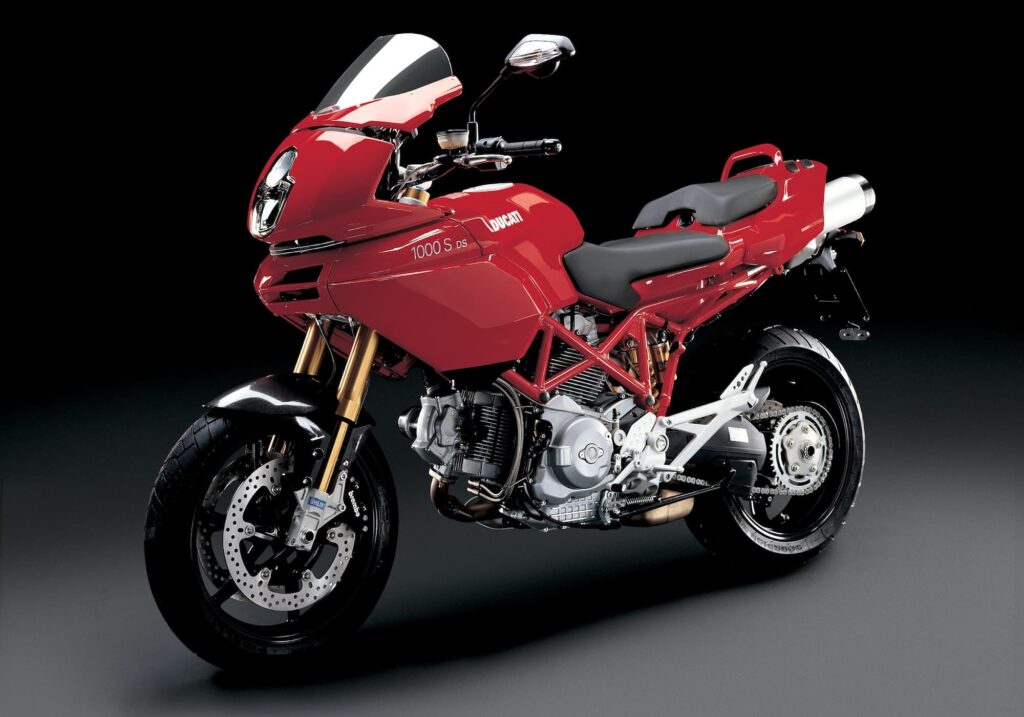
While Öhlins is always good, the original Showa suspension on the Multistrada 1000DS was also very good — so much so that some writers surmised that Ducati intentionally downgraded the 1100’s suspension to Marzocchi/Sachs just to distinguish the 1100S’ Öhlins setup.
The downside to the 1000DS (and its successor, the 1000S DS) is that despite its shorter gearing, it’s a little long-legged. It doesn’t really like low RPMs (cue the collective feigned gasps from the crowd that has ridden nearly every Ducati) and its starter motor is a little cantankerous.
Also, the fuel gauge is unreliable. It goes to “empty” way too quickly. I just learned to ignore it — but I bought it over a decade after its launch. People who bought a premium bike brand new would have been more annoyed. (This wasn’t just me — e.g. Cycle World noted it, too.)
Finally, bear in mind that the 1000DS is from the era of the air/oil-cooled “Desmodue” engine (desmodromic valve timing, two valves per cylinder). It requires a valve inspection / adjustment every 6,000 miles / 10,000 km, with a belt replacement every two services or years.
Luckily, it’s not that hard to do. It’s just a bit annoying as it comes up about once a year if you actually use the bike for touring. Taking the tank off a Multistrada is also not for the faint-hearted!
Ducati Multistrada 620 (2005)
The Ducati Multistrada 620 was the first attempt at a “little” Multistrada. It was only available for a couple of years.
The Ducati Multistrada 620 is fine, but the 620 motor is already a little low-powered in the Monster 620, so in the heavier and bigger Multistrada it’s a little underwhelming.
But for many parts of the world where you can’t go that fast anyway, the Multistrada 620 is definitely enough bike! It’s loosely like a Suzuki V-Strom 650, though with more flair, but with narrower service intervals.
Note that the Multistrada 620 has a wet clutch, as does the 1100 and every model of Multistrada from here onward.
The 620 also has a narrower 160-profile rear tire and 3-spoked wheels. The rear wheel sits on a dual-sided swing arm. The single-sided swing arm was a sign of “premium” in the early days, but Ducati has moved on from those times.
Ducati also released a “Dark” version which isn’t just a styling exercise; it also has a single brake disc, but a beefier four-piston calliper.
The Multistrada 620 wasn’t terribly popular, and isn’t a popular choice second-hand, either. That said, they were cheaper, and still should be – though as used bike prices tend to congregate around a base floor of what any 20-year-old motorcycle in good condition should cost, there won’t be much price difference anymore. Just bear in mind it’ll be harder to sell.
Epilogue: Later, in the era of the Testastretta-11 Multistradas, Ducati re-introduced the Ducati Multistrada 950 as a baby Multi, itself a successor to the in-betweener, the Hyperstrada 821. While the Hyper 821 was a little off (it had a few things wrong with it that need to be rectified by any diligent owner), the Multi 950, and its follow-up, the V2, have been much more successful than the 620.
Ducati Multistrada 1100 and 1100 S (2007)
The Ducati Multistrada 1100 and 1100 S (released at the same time in 2007) is a new, upgraded Ducati Multistrada, based on the bigger 1078 cc Desmodue motor.
Again, it’s the same basic motor as used in many other Ducati motorcycles, like the Ducati Monster 1100, Ducati Hypermotard (1100), and … that’s it, for the period. Ducati temporarily had ended its Supersport and S2R lines.
But what may interest you is that the 1100 motor is alive and kicking today in the Ducati Scrambler 1100! It’s even still air/oil-cooled, and still has a wet clutch. The Scrambler 1100 makes a shade less power, presumably due to emissions-driven restrictions, but it’s still great, and the new bike has fancy things like cornering ABS.
See more about the Ducati Scrambler 1100 line here.
The 1100 motor in the Multistrada 1100 makes more power than the 1000, but also a lot more torque. This comes at a cost to revviness, as might be expected in a larger-capacity engine.
Ducati didn’t just take the old model Multistrada and bore out the motor by 4mm. Ducati also changed suspension to a Marzocchi / Sachs pairing from the original Showa front and rear — though as I mentioned above, some considered this a mild downgrade. The S version has Öhlins front and rear, like the previous S.
Also, bear in mind that if you’re looking for the iconic Ducati dry clutch experience, that died in the Multistradas with the 1000DS and 1000S DS. The 1100 models (and the 620) all had wet clutches.
As Ducati did with the 2005-onward 1000 model, Ducati kept the 1100’s sportier stance. Compared with other adventure sport tourers of the day (most notably the recently revamped Triumph Tiger 1050), the Ducati Multistrada 1100 is very much a comfortable sport bike. It’s aggressively poised and easy to turn, despite having a fairing and everyday comfort.
Ducati also made modifications to the fuelling system to keep it compliant with the emissions guidelines of the time. Oh, and Ducati finally fixed the dodgy fuel sensor for the 1100 models.
I’ve looked at many Ducati Multistrada 1100 models, especially S models. To me, these are excellent second-hand buys. They’re not the sexiest bikes on the market, but they’re relatively expensive to maintain, compared to a newer liquid-cooled tourer. So you can usually buy a fully-equipped Ducati Multistrada 1100S for a pittance, and it’ll come with luggage, a centre stand, and maybe even heated grips.
The Looks of the Multistrada 1000 / 1100 / 620
I’ve gotten this far without addressing its looks. I’ve heard the Multistrada 1000 / 1100 / 620 as being the ugliest Ducatis ever made. Well, they’re in some very sexy company, so that’s still not much of an insult…
I acknowledge that the majority of the public won’t instantly think that the early Multistrada is a cool bike. I get that. People like a) stripped-back naked racey bikes (no, I won’t call them you-know-whats!), b) super sport bikes, or c) big burley cruisers. Adventure bikes or dirt bikes may invigorate the spirit with promises of crusading across deserts.
But adventure sport tourers are difficult to pitch from the outset, as it’s like pitching a Porsche Cayenne, rather than the 911 next to it. And, on top of that, the early Multistradas are pretty weird-looking.
One of the main reasons that the early Multistrada looks odd is the front fairing. The middle bit is detached, to make the steering not too heavy. But man, the detachment makes it look even weirder!
See the below photo of my 1000DS in the South Bay area (which is why it’s foggy / raining). The whole front section looks misaligned.
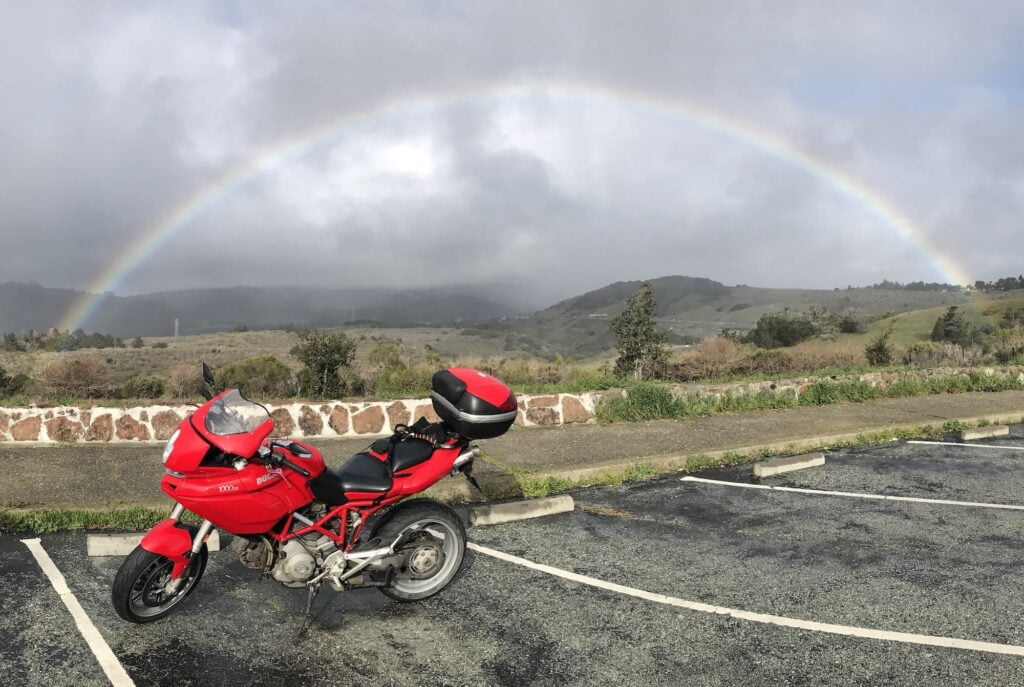
But despite this lengthy disclaimer… I like it. I didn’t even like it when I first had one, so much so that I decided to make it into a “Monsterstrada” (something I now regret). Over time, though, I’ve both become more attracted to weird old bikes (including the Ducati 999), and become more of a weird old biker myself.
Visordown put it best — “It’s a bit like my weird celebrity crush. I quite fancy her, but I know I shouldn’t really, and don’t like to admit to it in the company of mates.” (Note, they mentioned a celebrity crush that I don’t know. Insert the one you find relevant!)
You shouldn’t buy a bike because it looks weird, though; you choose it because it’s a good bike and it looks good to you. All I’m saying here is that I’m surprised that the Multi 1000 / 1100 grew on me, and so it’s not out of the question that it’ll grow on you, too.
What Came After the Air/Oil-Cooled Multistrada?
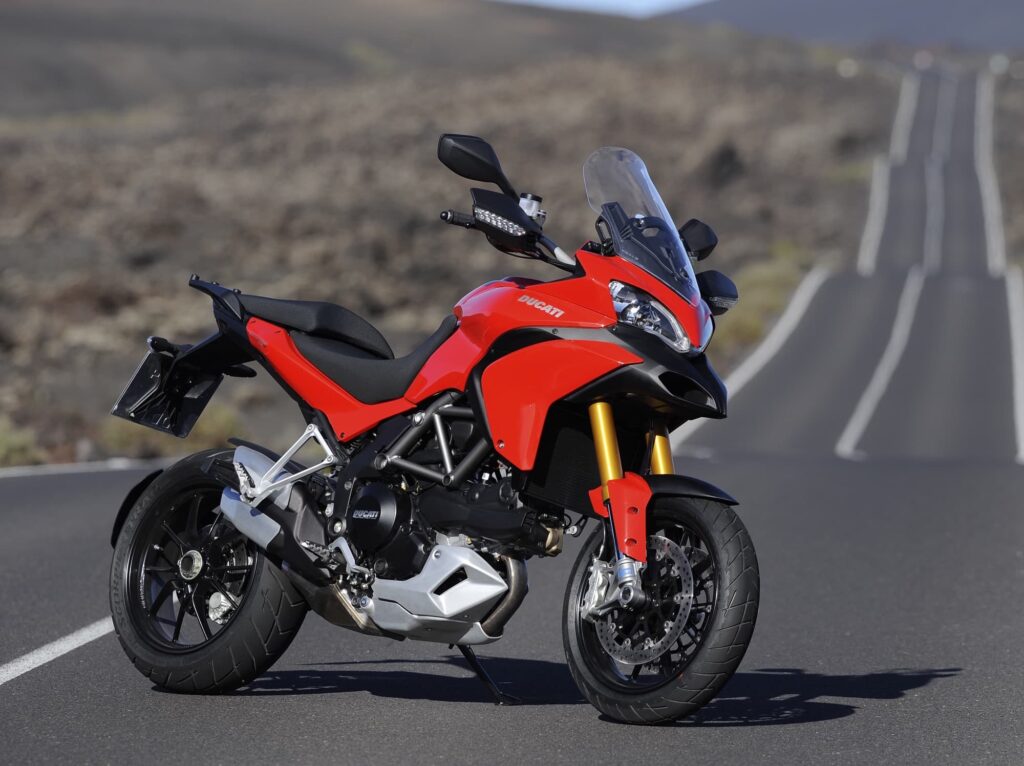
Ducati released the Ducati Multistrada 1200 for the 2010 model year, and boy, Ducati really shook things up.
There was a lot that was different about the Multistrada 1200. In fact, only the name and general concept stayed intact! Ducati added
- A Testastretta 11-degree motor (see the Ducati engines guide) with much more power, liquid cooling, four valves per cylinder, and much wider service intervals
- Ride by wire and ride modes — the Multistrada 1200 S being the first motorcycle (ever!) with ride modes (seems incredible that it was this recently)
- A huge revision to the looks — it looks as good as any bike in the sport-touring class could look.
The 1st gen Ducati Multistrada 1200 S is iconic enough that Ducati has it on display at the Borgo Panigale museum.
Ducati has iterated on the Testastretta 11 Multistradas until today (in the smaller class of Multistradas, not the V4), so it’s got its whole other buyer’s guide on the way.
Alternatives to the Air/Oil-cooled Multistrada Period
If you’re looking at an air/oil-cooled Multistrada 1000 or 1100, then you’re probably also considering a few other sport tourers from the period. I like to be fair and suggest a few bikes worth looking at.
There are very few bikes exactly like the Multistrada, but here are a few that come to mind — Comfortable, modestly sporty, and with some classic qualities.
Bear in mind that none of the below bikes are air/oil-cooled. But they have other things in common.
Honda XL1000V Varadero 2nd gen (2003-2010)
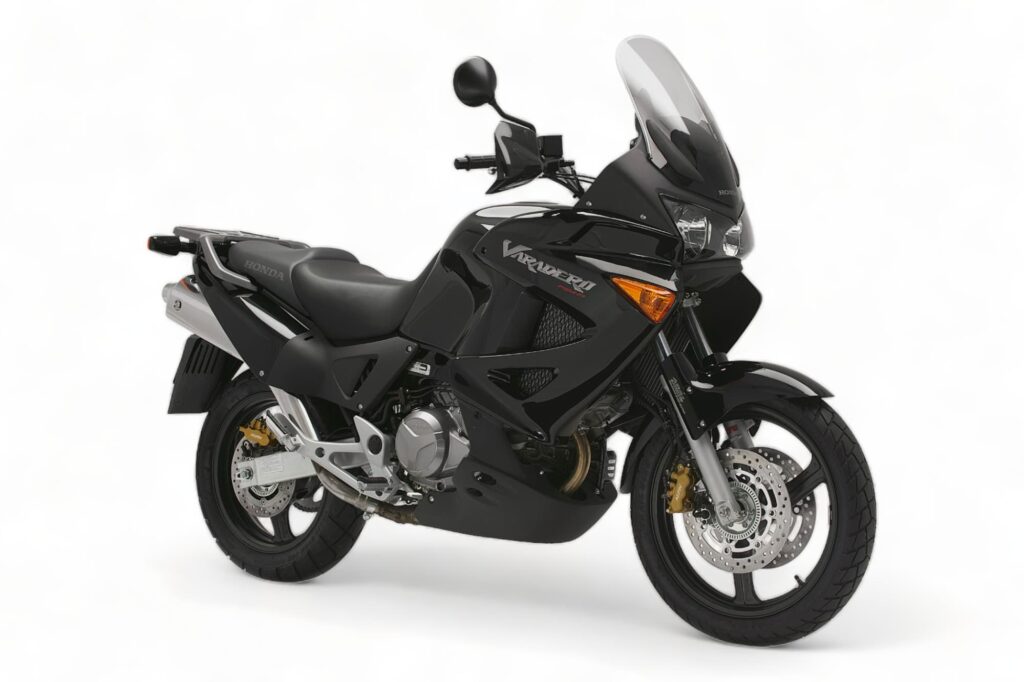
Honda made the 2nd gen Varadero between 2003 and 2010. It didn’t make it to every market, but you can still see them on the road in Europe and in Australia.
The Varadero is an upright touring motorcycle powered by the VTR1000F’s motor. The 2003-onward version had fuel injection and a sixth gear, which makes it economical as well as characterful — I always notice when one rumbles past.
The Varadero is worth looking at — if it’s available near you — for a few reasons, like its 25-litre tank (vs 18L of the Multistrada 1000DS), its power and broad spread of torque, its long service intervals (16000 miles / 24000 km between valve services), and even optional ABS.
But the Varadero is more of an adventure travel bike or a commuter with a big engine. It’s comfortable, but it’s not a sport bike. If you are looking at the Multi because of travel rather than twisties, then you may prefer the Varadero — it’s cheaper and easier to own, too.
Suzuki V-Strom 1000 (1st gen)
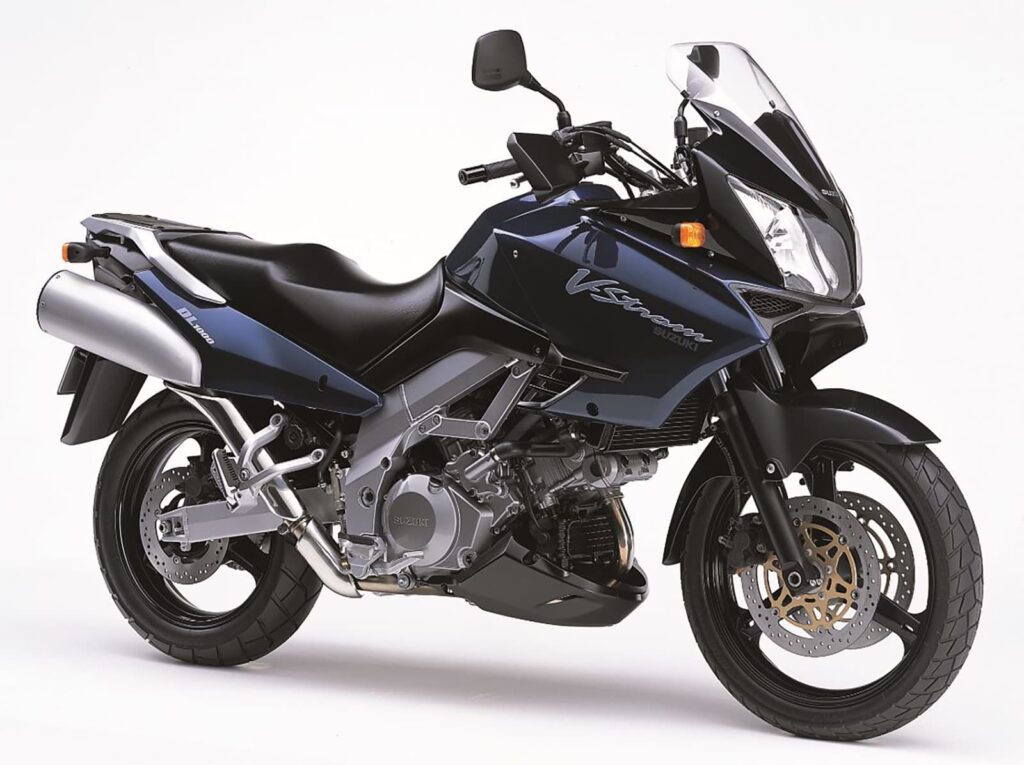
Suzuki’s V-Strom has been a competitor in the adventure touring market since its infancy — and it still is!
The V-Strom 1000 has always vied for position as Suzuki’s adventuring top dog with the V-Strom 650, with people contending that one or the other is the better adventure touring bike. Similar arguments play out today comparing the V-Strom 1050DE and 800DE. But it doesn’t matter — they each serve a niche.
The V-Strom 1000 was the first motorcycle to inherit the thunderous V-twin from the ill-fated Suzuki TL1000S (a good bike but marred by some marketing upsets). While the TL never took off and is now a niche / cult bike, the fact that a version of the engine is still in service today is a testament to how good it is.
In fact, the number of liquid-cooled V-twins you can buy in everyday motorcycles is decreasing. Suzuki is one of the last manufacturers to still be making them in their mainstream model range.
While the V-Strom 1000 is similar to the Multi in that it’s an upright V-twin powered bike, the V-Strom 1000 is very much an adventure bike, rather than a sport bike. Its front wheel is a 19-inch unit, and in recent years you can get it with spoked rims.
Triumph Tiger 1050 (2007-2012)
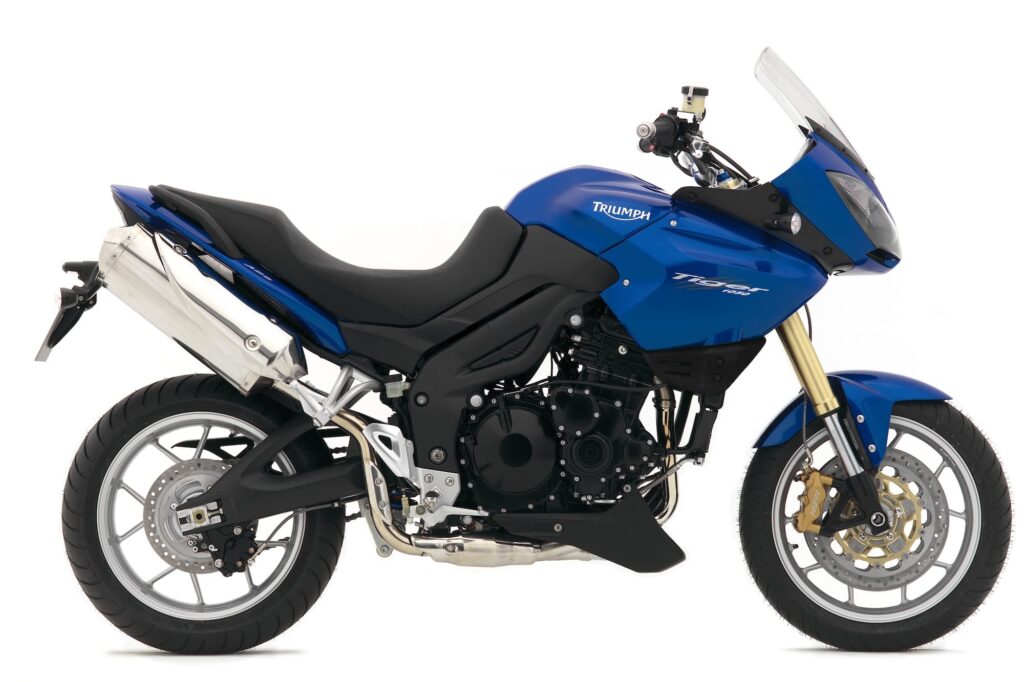
Far and away, the most relevant motorcycle as an alternative to the Ducati Multistrada 1000 / 1100 is the refreshed Triumph Tiger 1050, which finally admitted that people wanted to ride these things pretty much just on roads.
The Tiger 1050 was an update to the Tiger 955i. It got the engine from the also recently updated Speed Triple 1050, but in a tune that’s more suited for midrange touring. On top of that, the Tiger 1050 got refreshed looks and a nicer-looking fairing.
The 1050 triple is a kick-ass engine. It sounds good and feels good everywhere. I like that feeling, but also know that any time on a freeway beyond around 60 seconds is very annoying without a windscreen, so rather than stick a screen on a Speed Triple, I picked up one of these myself (albeit a later model, after the 2013 refresh).
The only downside to the Tiger 1050 is that it feels less like a sport bike than the Multistrada 1100 in particular. But it’s still very capable. I should know — I ended up on one of these myself, years later (a story for another day).
Yamaha FZ1S
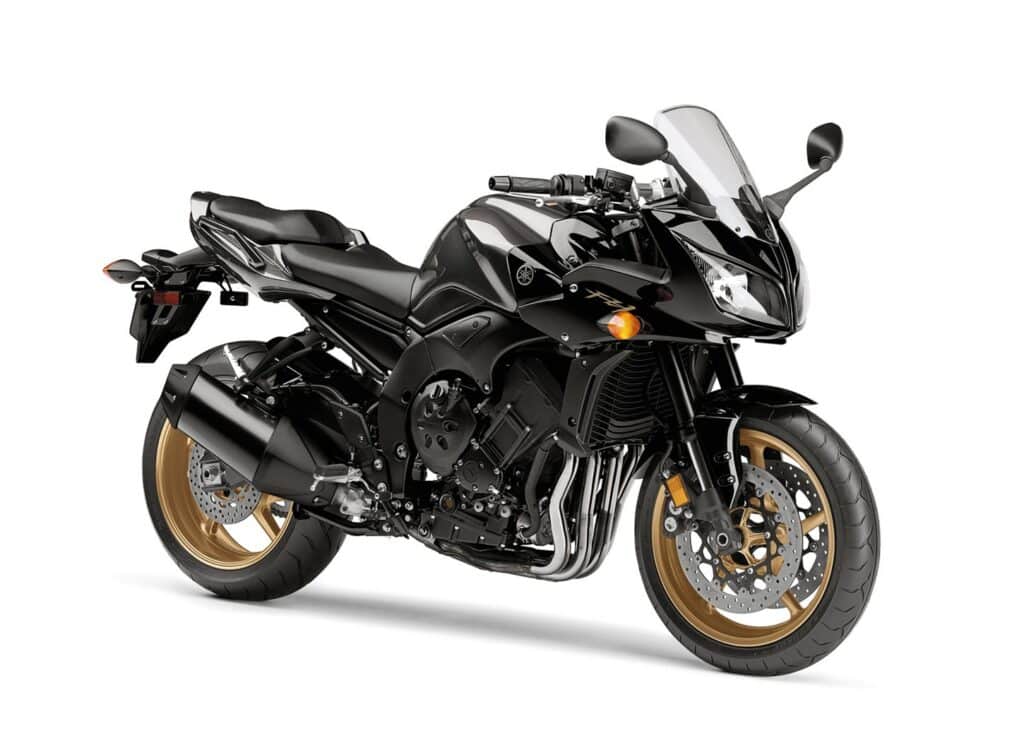
Yamaha’s second-generation 2006-onward Fazer may be the last in this alphabetically ordered list, but I think its existence is the biggest threat to the Ducati Multistrada 1000 / 1100.
The FZ1S has a fuel-injected inline four-cylinder R1-derived motor that’s “detuned” to a huge peak of 148 bhp at 11,000 rpm. Yes, as much power as (or more power than) many older superbikes!
The 20-valve motor in the FZ1S really screams. It makes a mighty, throaty sound that modern, muted four-bangers can’t match. Even though Yamaha detuned it and tried to inject more of a midrange to the engine, it’s still one that likes to be revved.
Like the air/oil-cooled Multistradas here, protection is present but minimal. It’s sport touring, but with an emphasis on sport.
See more here on the evolution of the Fazer / FZ1.
Wrap-up
Like I mentioned at the beginning, as time has gone on, the more attracted I’ve become to the Ducati Multistrada, reminiscing fondly about the one I had.
In fact, I wrote this looking at a black Ducati Multistrada 1100S with low miles and full luggage… but it got away from me before I finished the article! Which is why I got the Tiger Sport. Time to switch things up, anyway.
If you can find a Multistrada with few mods and reasonable condition, there are a lot of reasons why it can make you a happy camper.
You may be held back by the idea of 6,000 or 7,500-mile service intervals. But bear in mind that the job itself isn’t that difficult.
If you already have one, I’d love to see it — send in a photo!

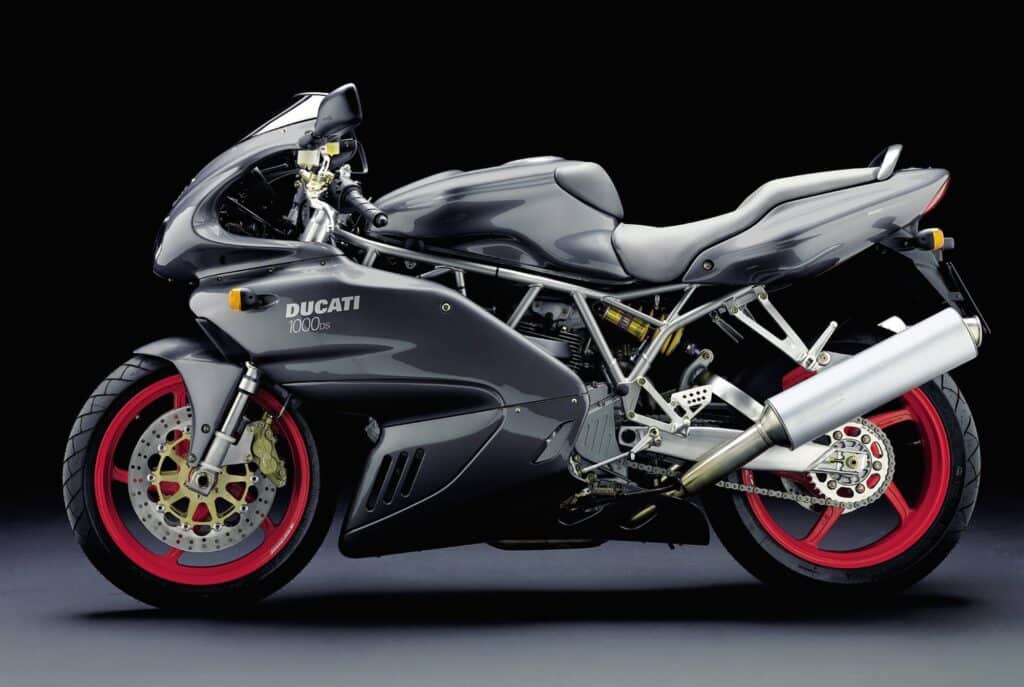
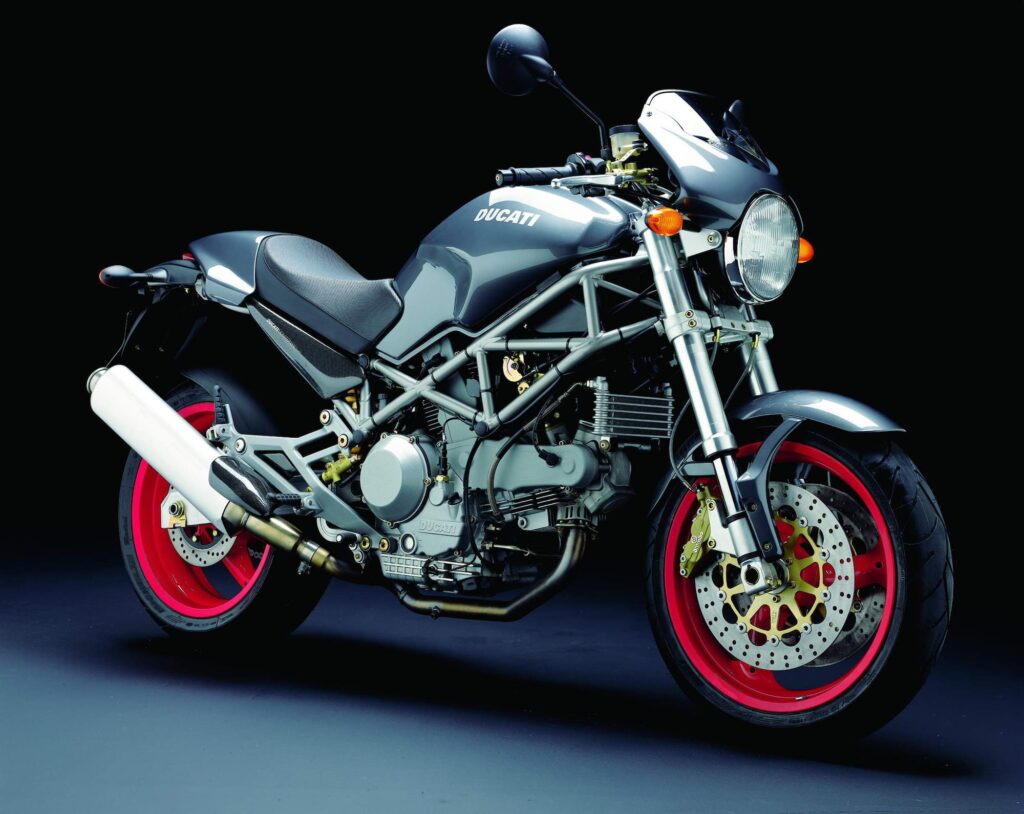
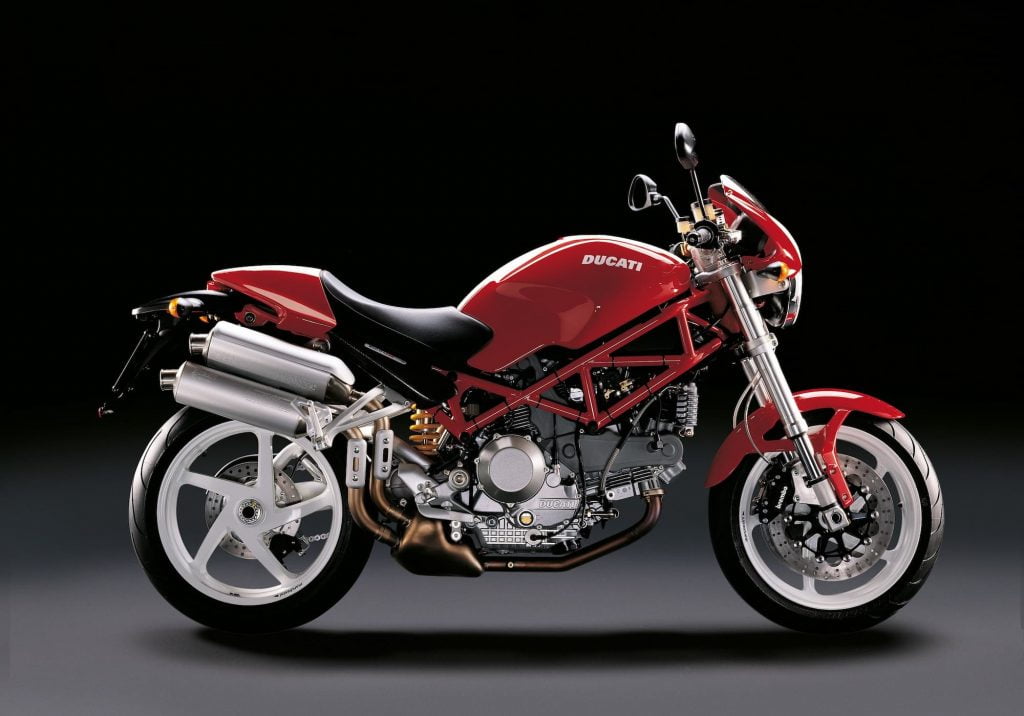
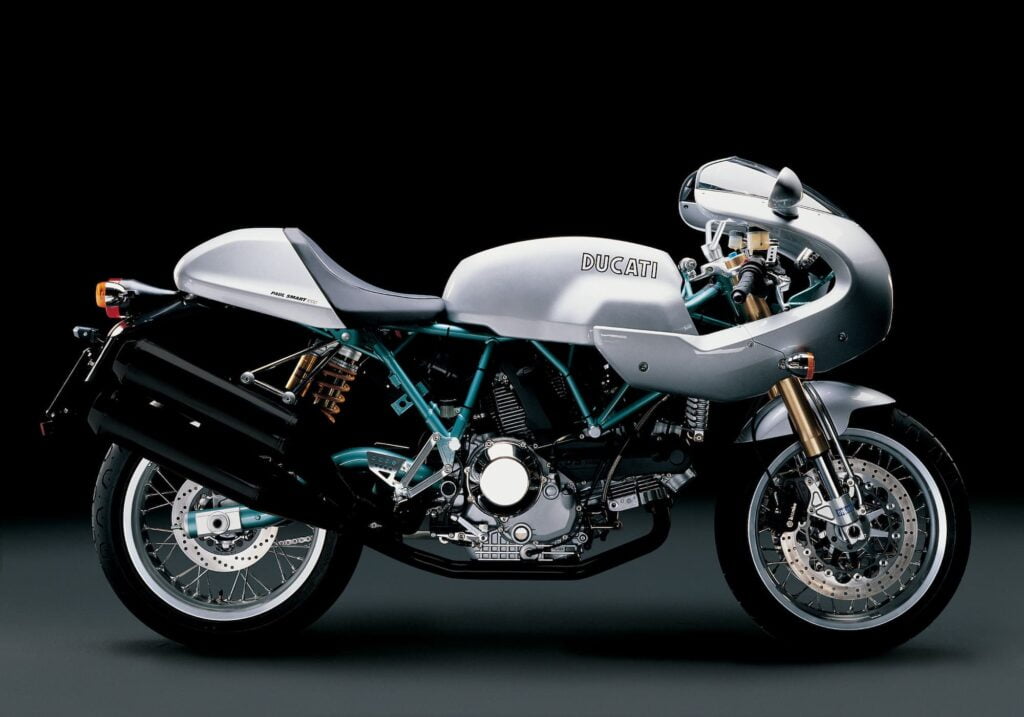
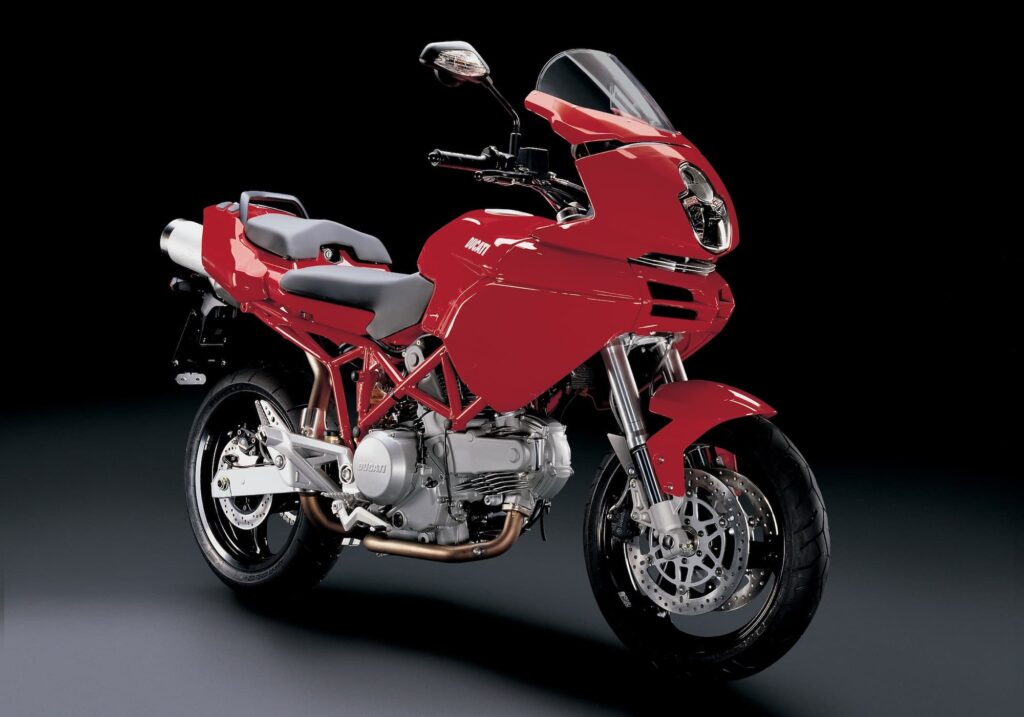
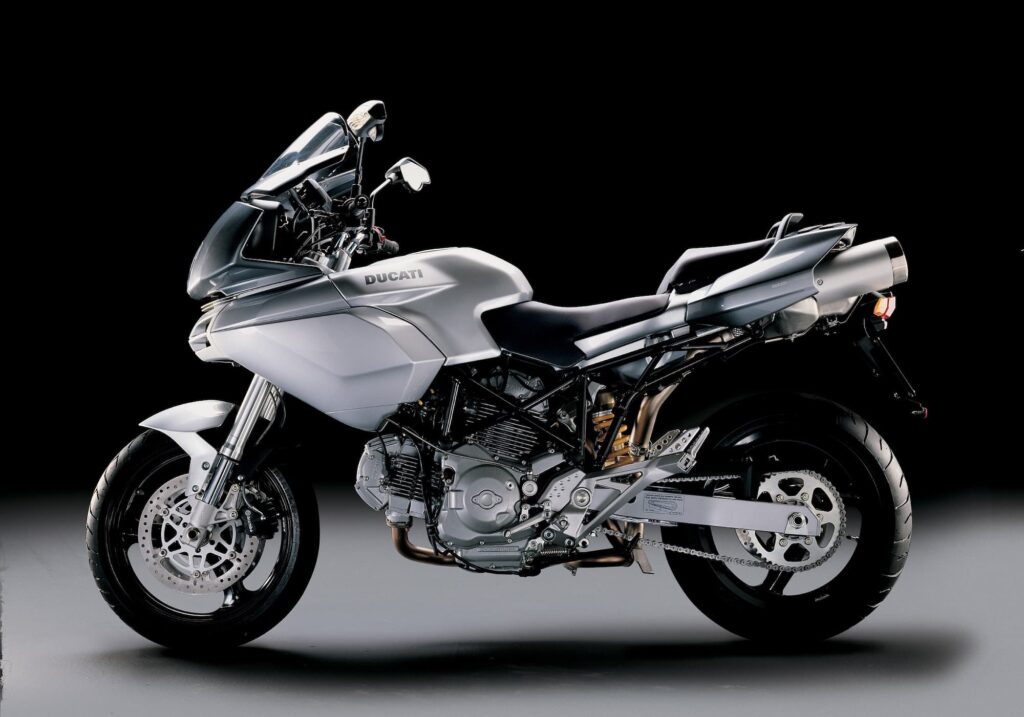
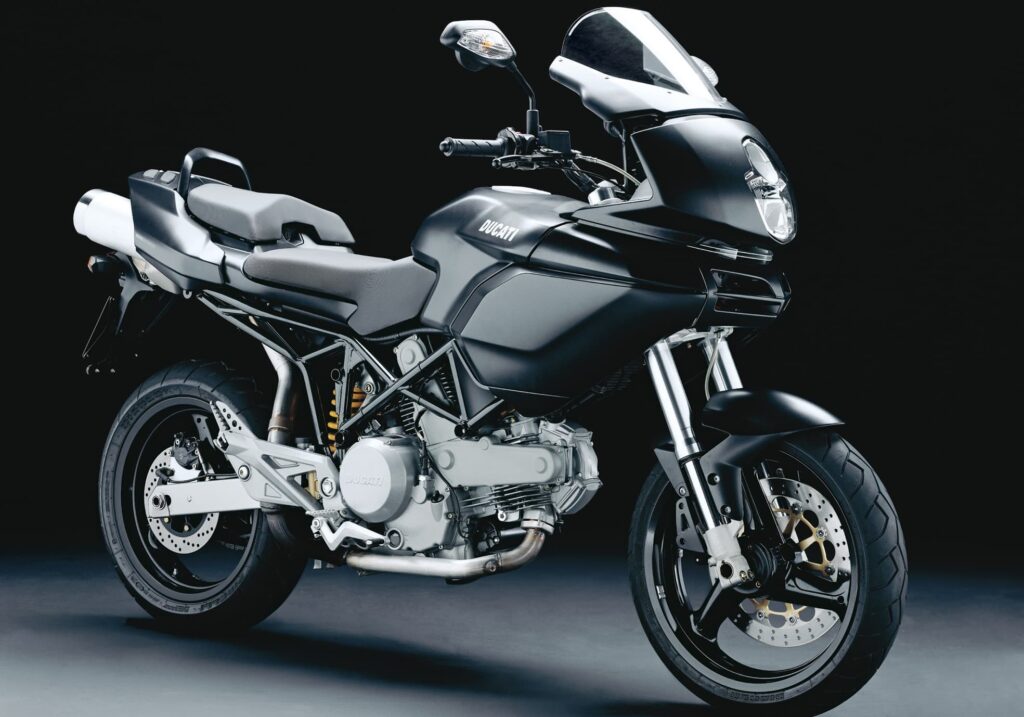
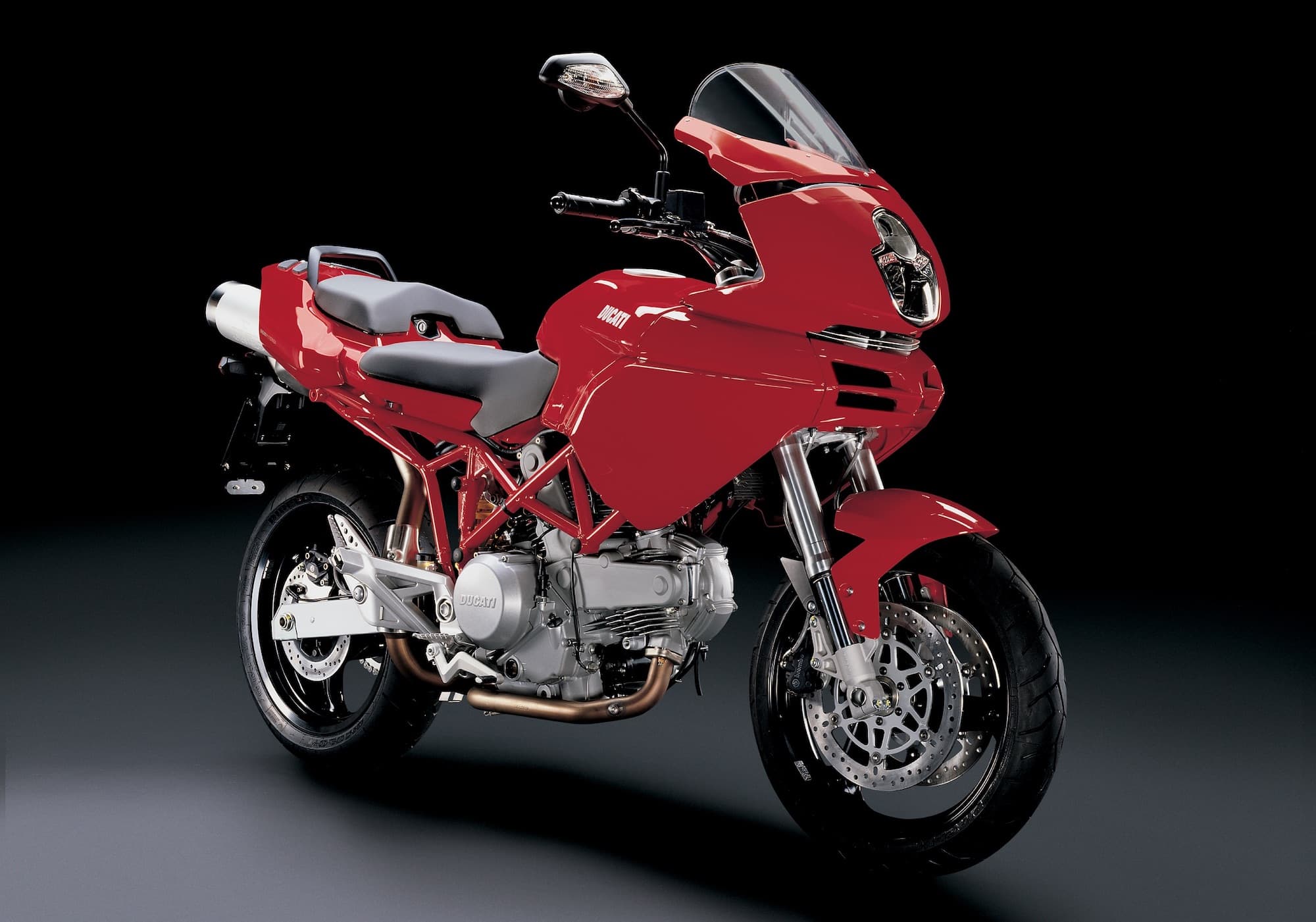
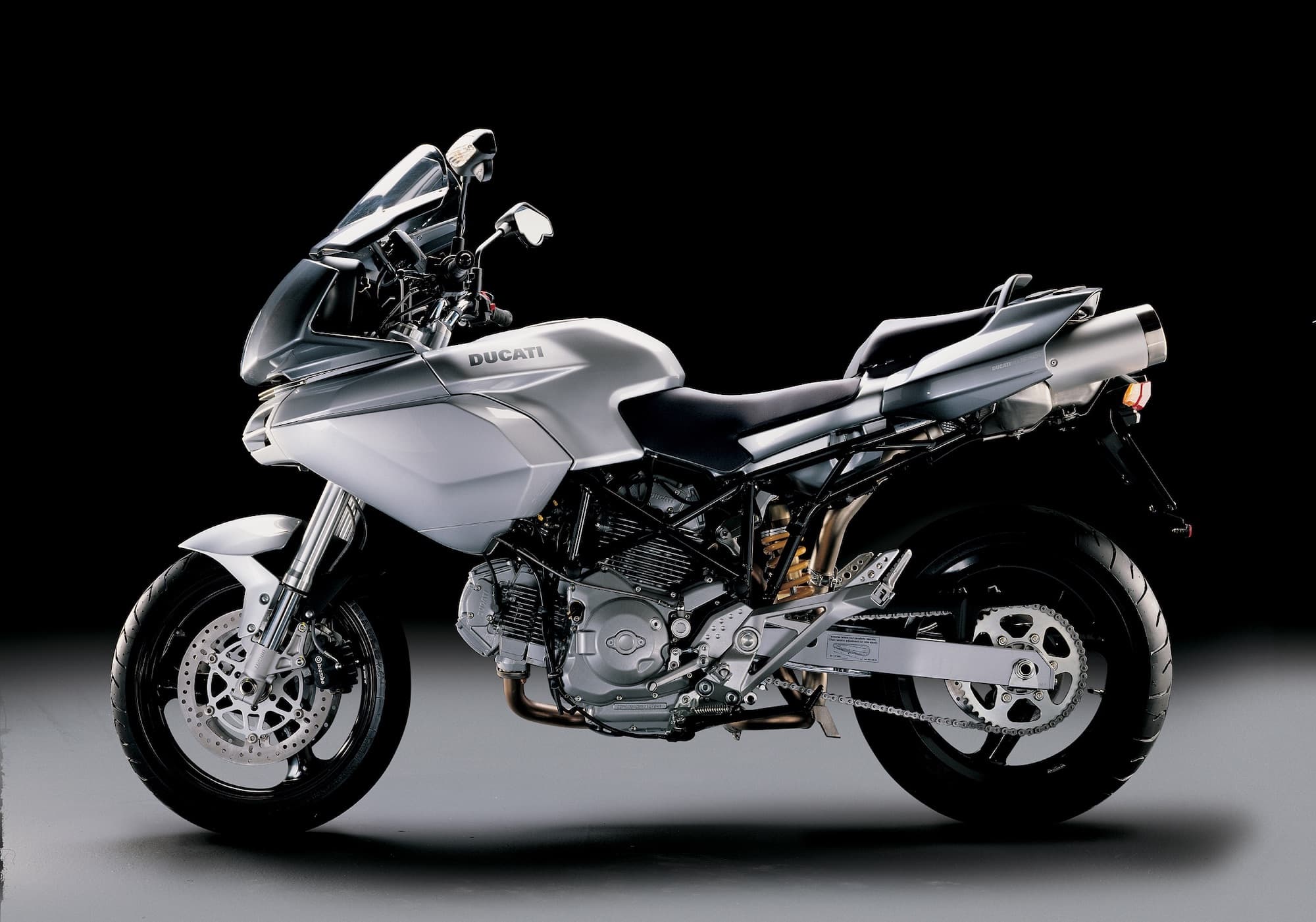
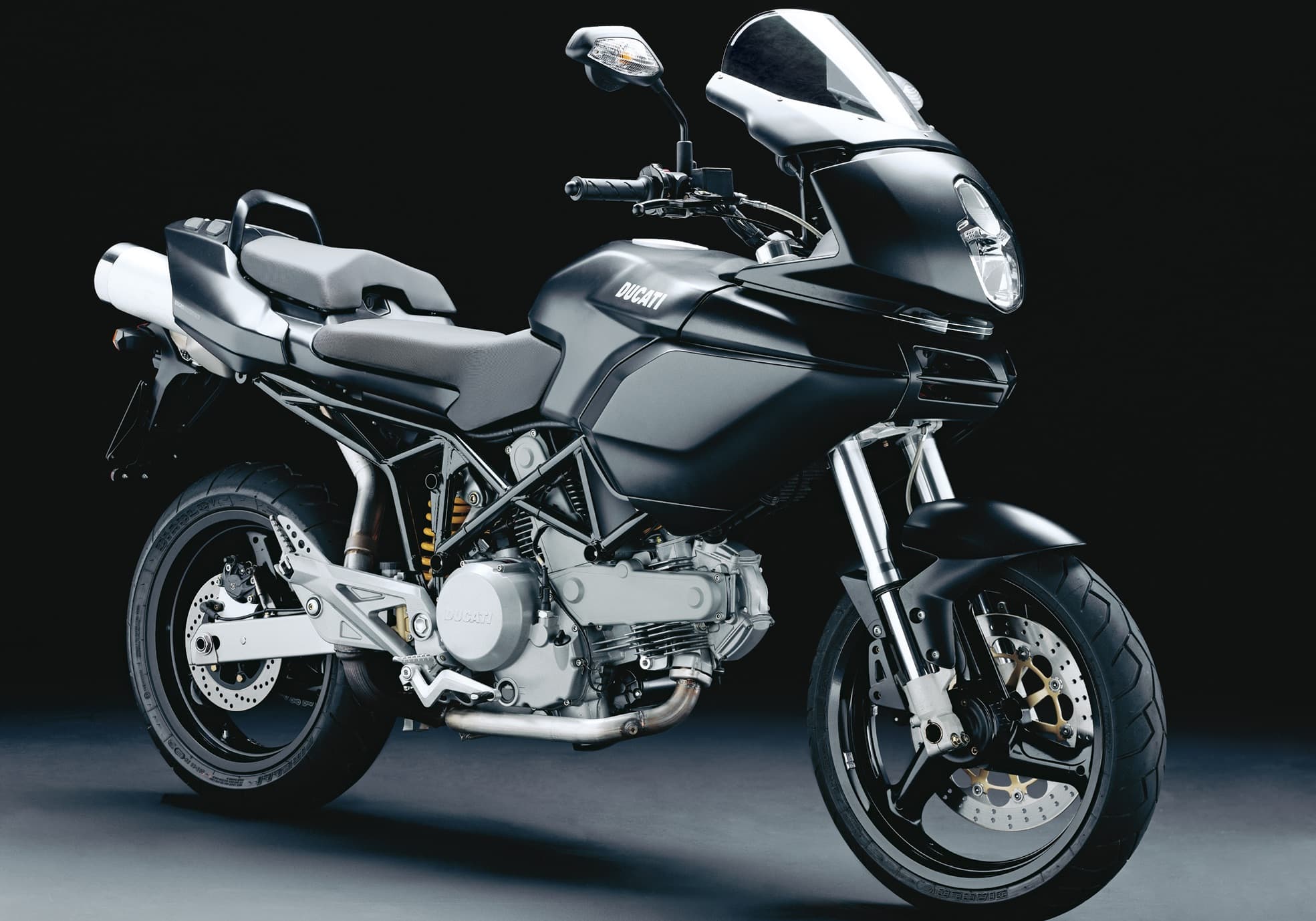
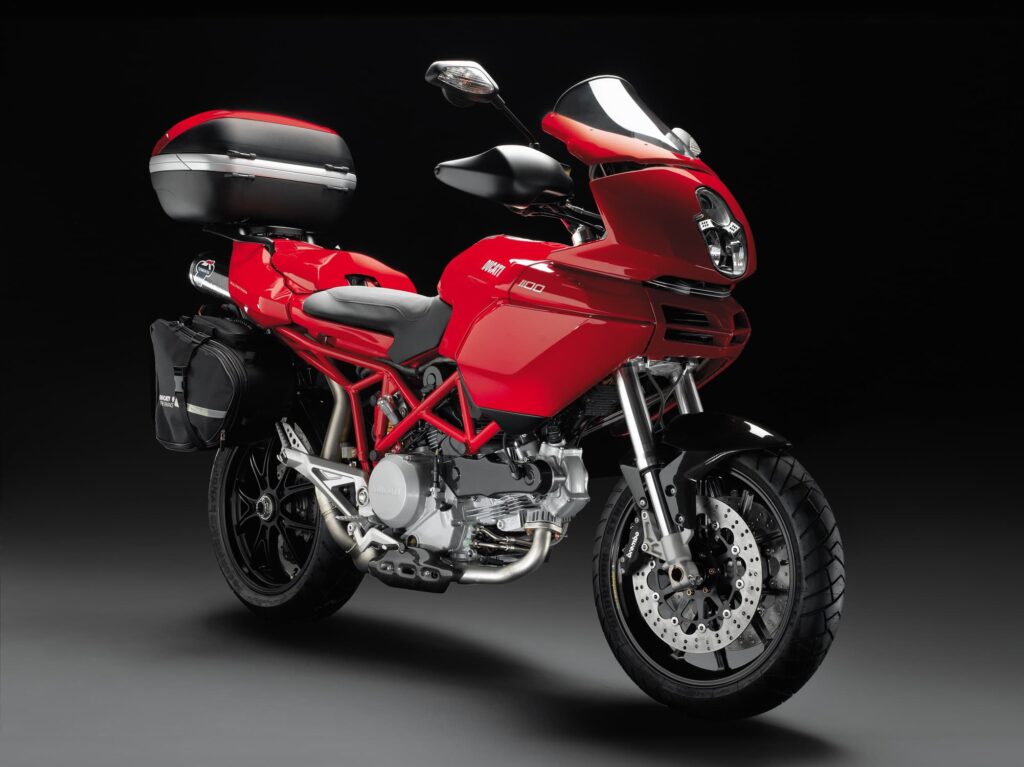
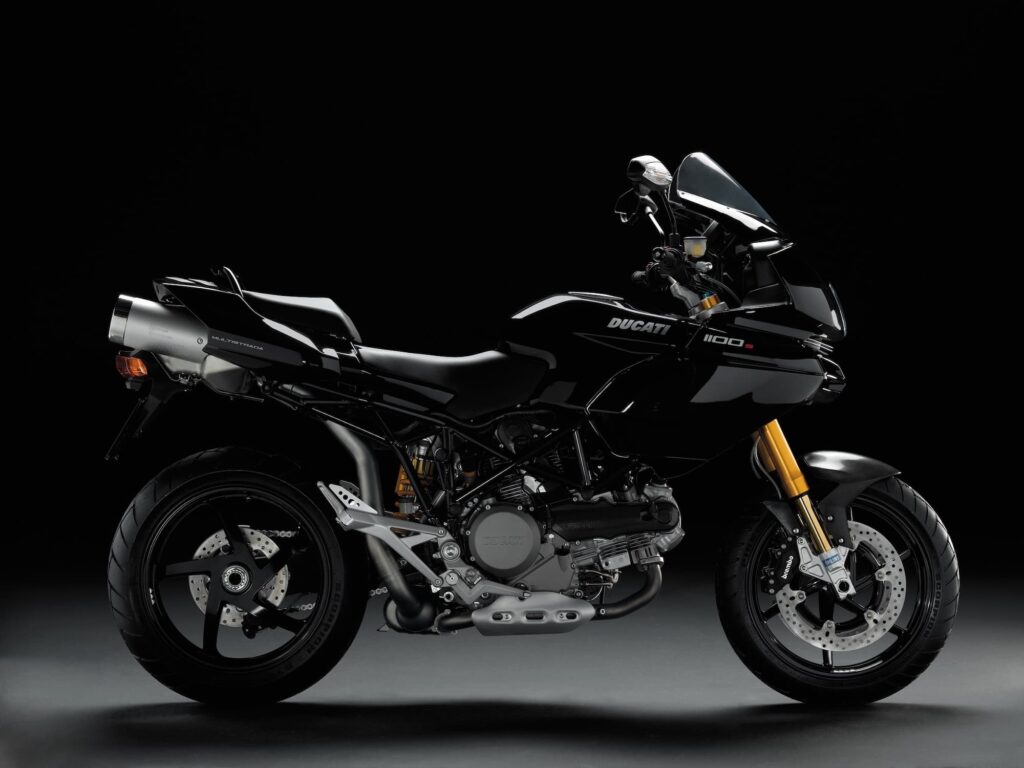
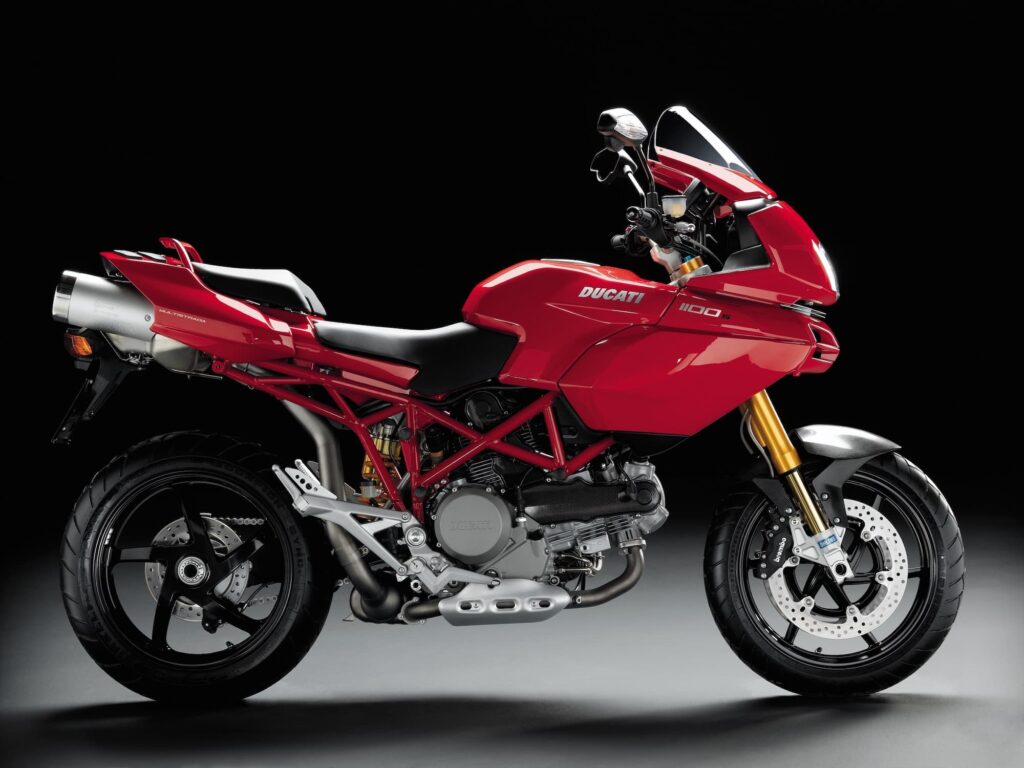
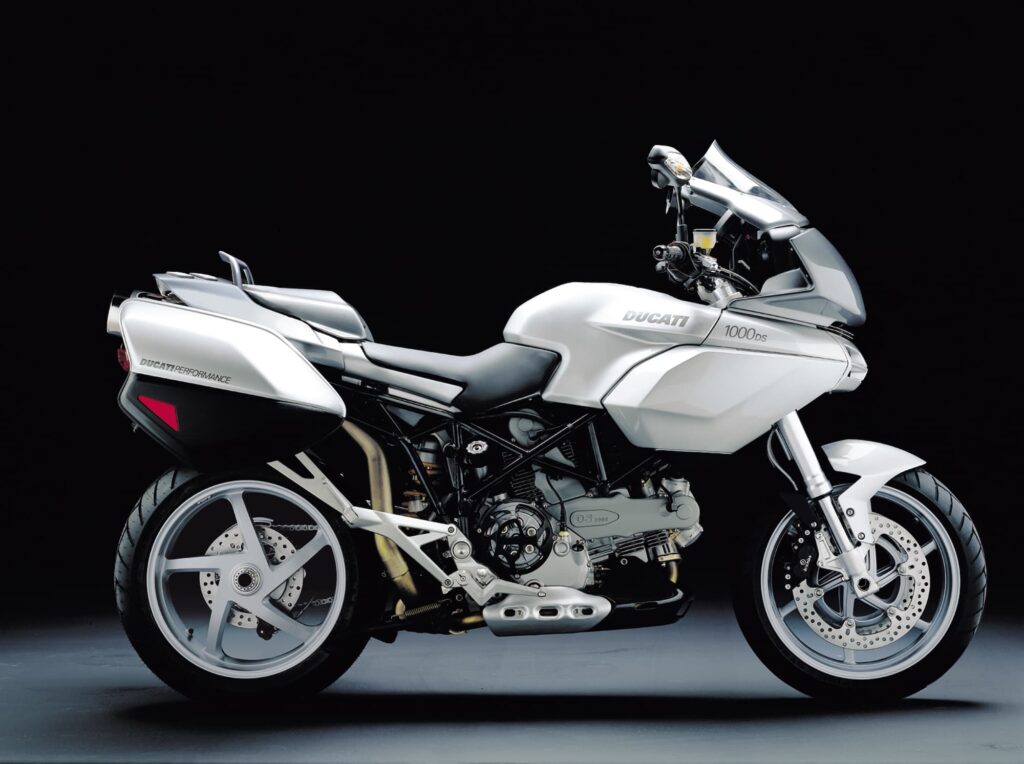
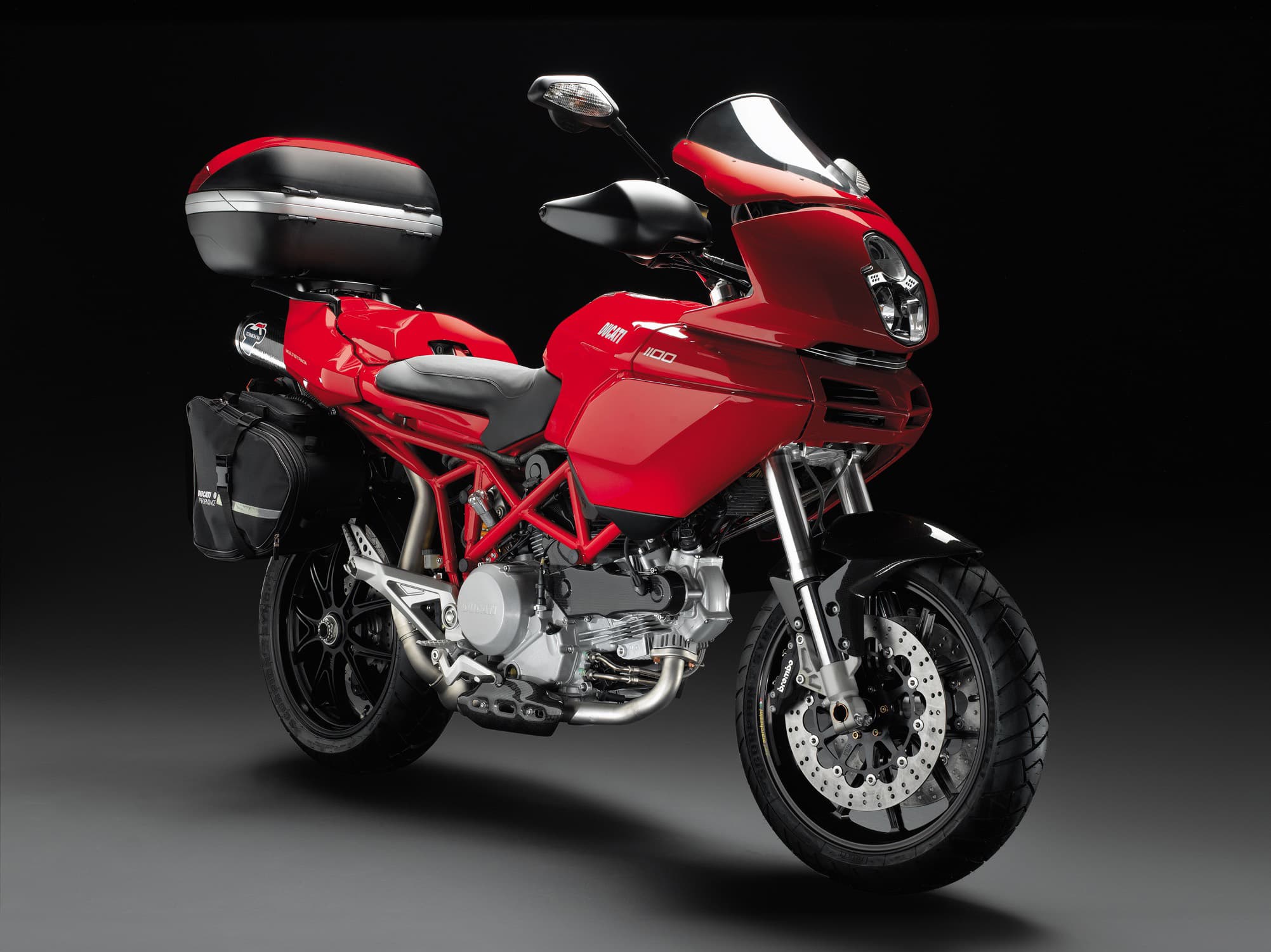
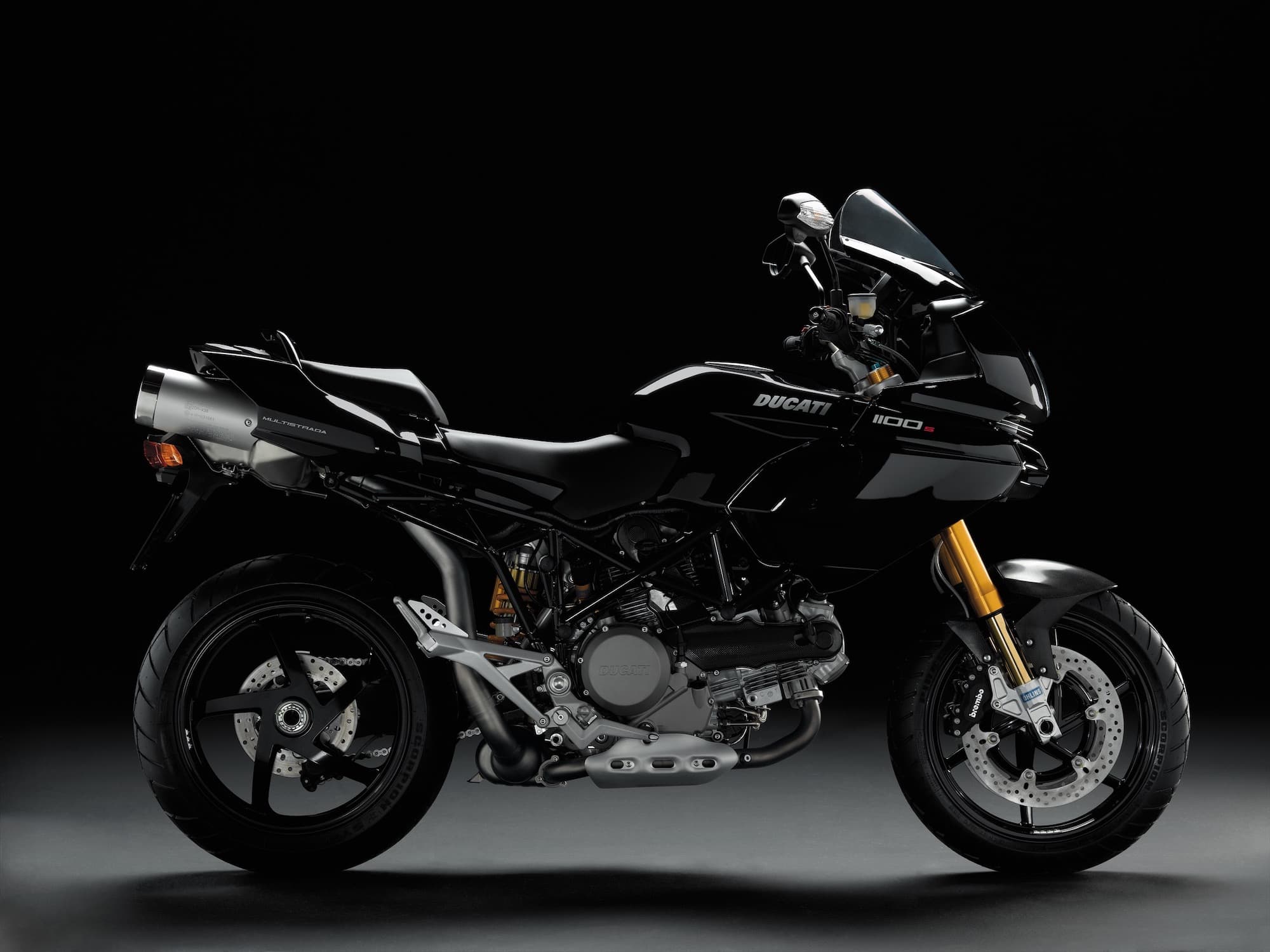
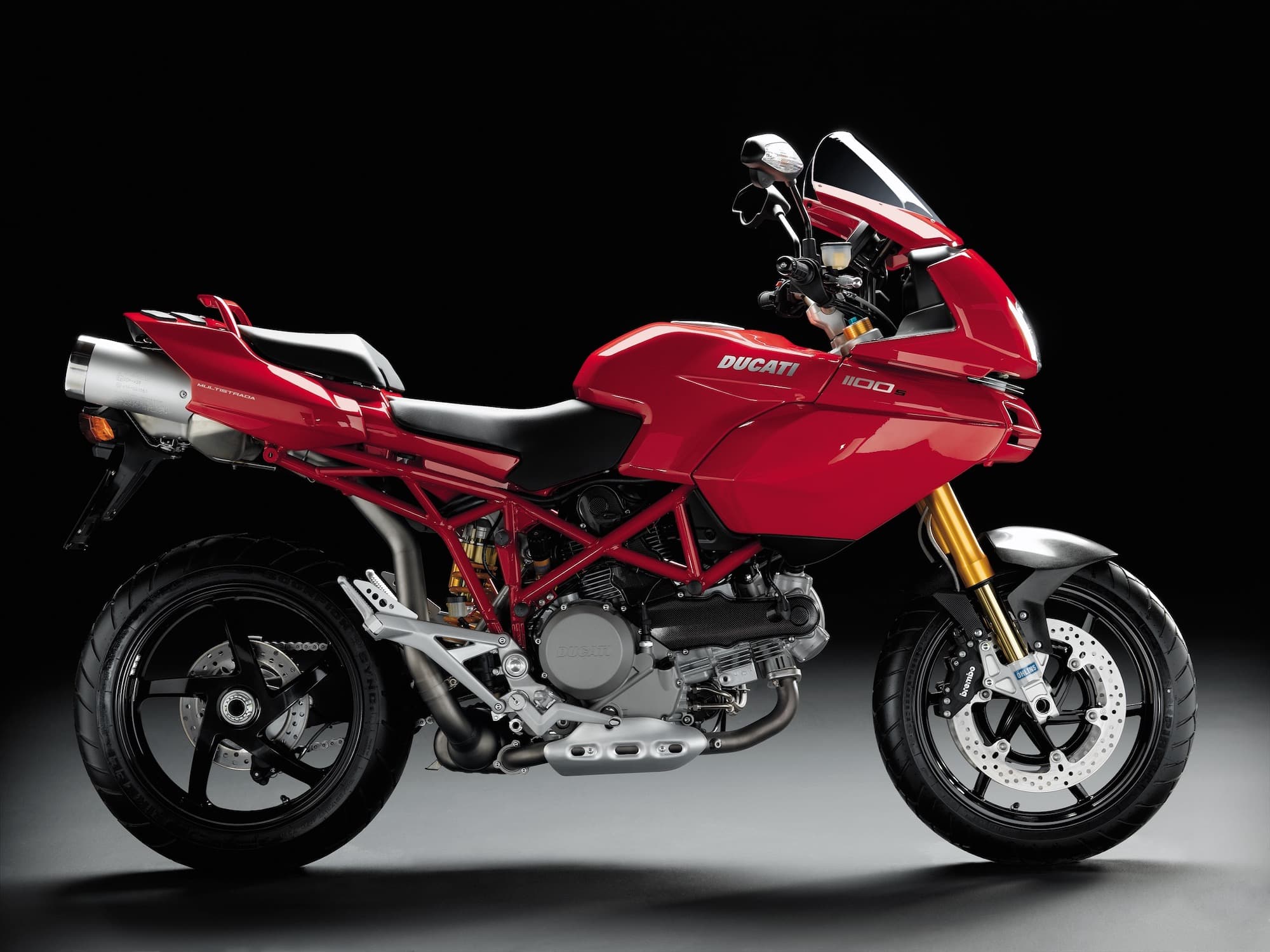
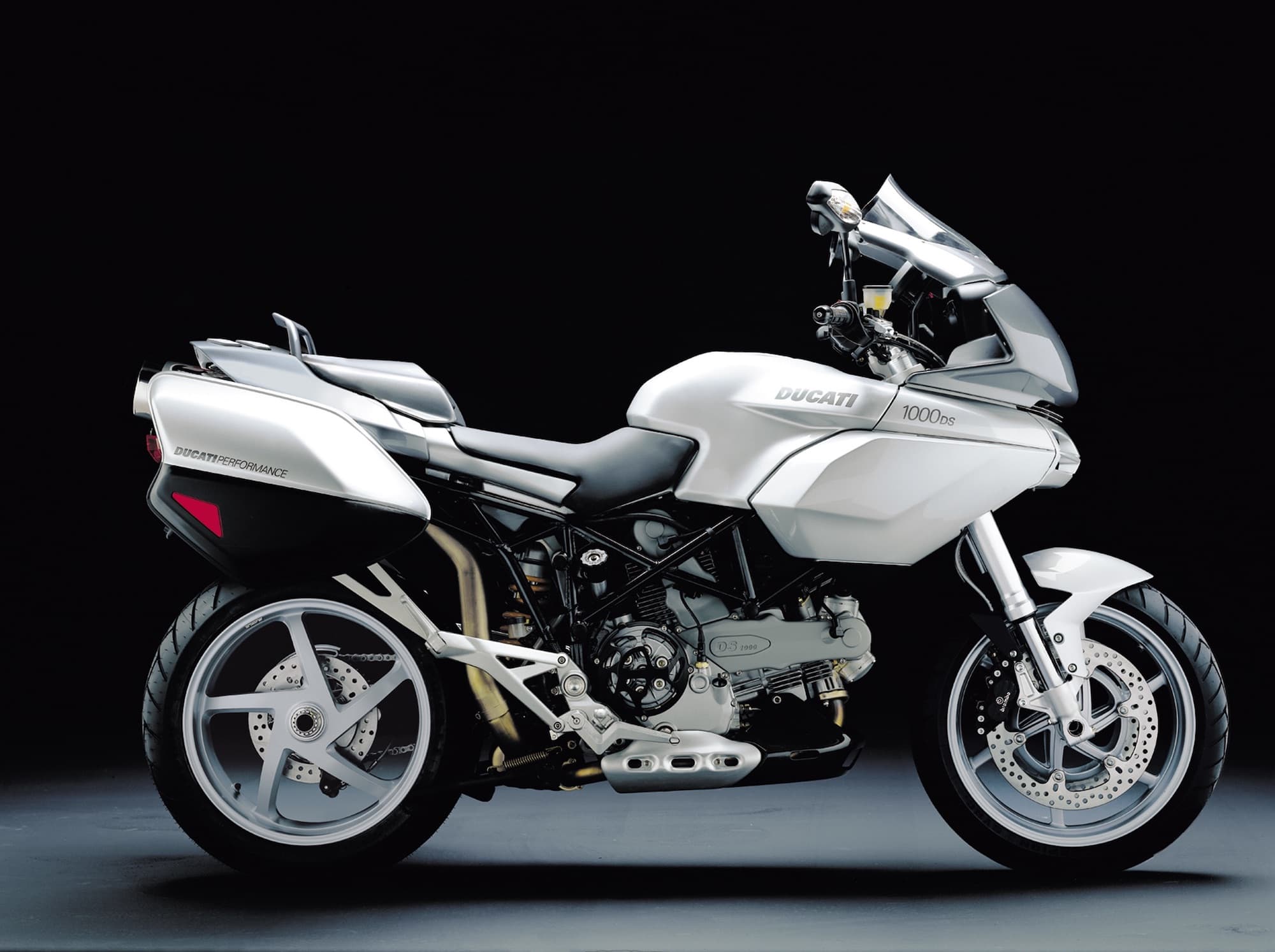
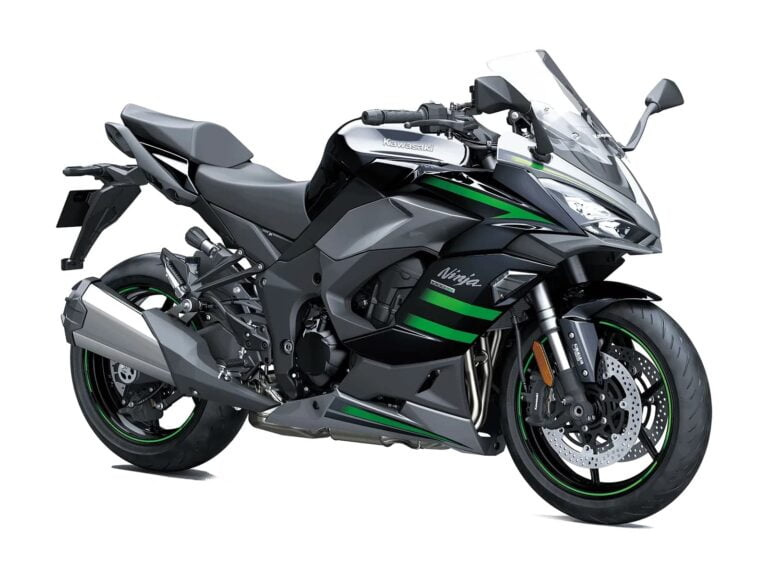
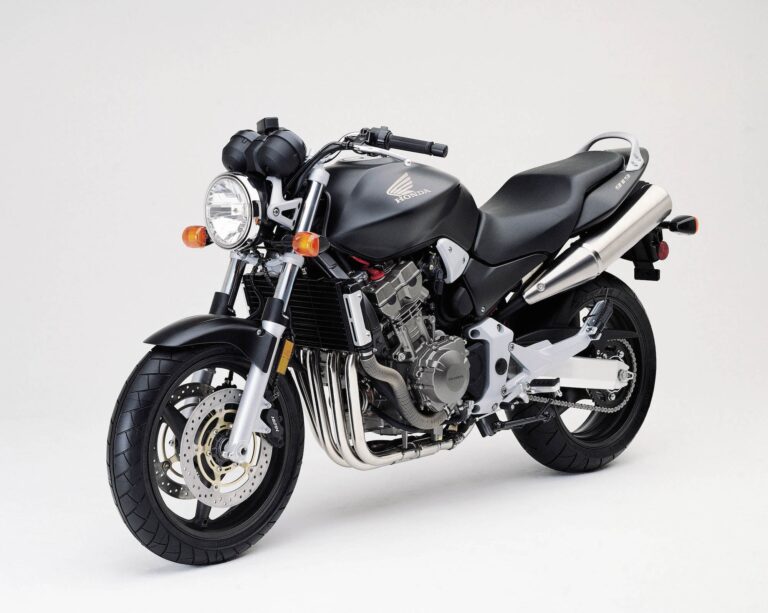
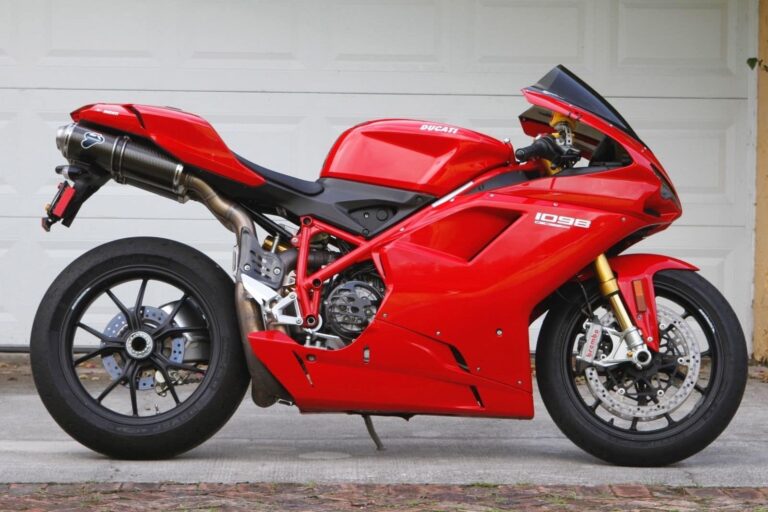
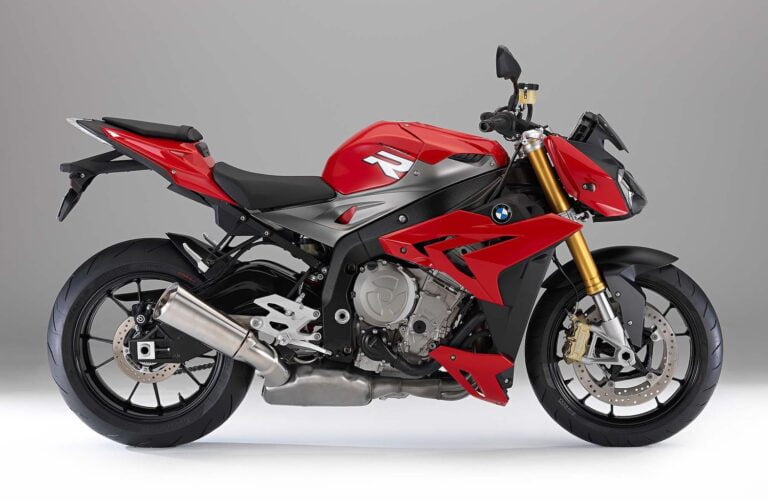
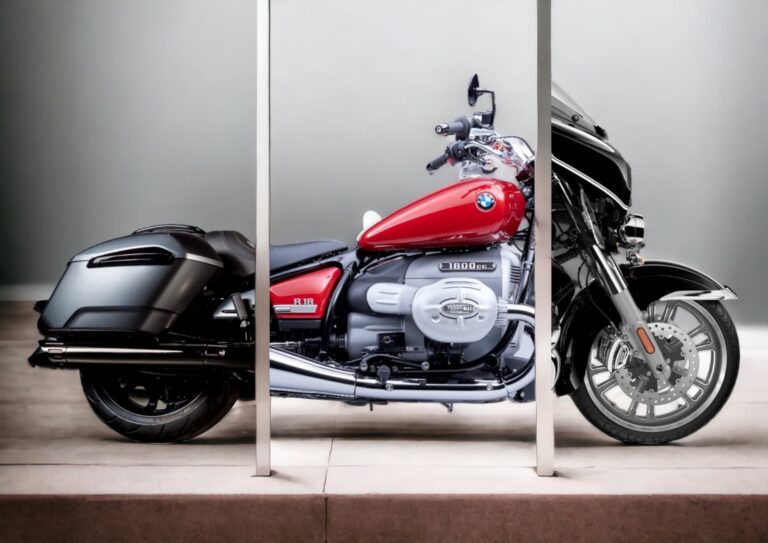
![Buying a Honda CBR600F, CBR650F and CBR650R [Updated for 2024] 39 Buying a Honda CBR600F, CBR650F and CBR650R [Updated for 2024]](https://motofomo.com/wp-content/uploads/2021/01/CBR600f4i-red-1-768x441.jpg)